Graffiti: Is It Art or Vandalism?
Introduction – what is graffiti.
Graffiti is a word used to describe any writing or images that have been painted, sketched, marked, scrawled or scratched in any form on any type of property. It can be a design, figure, inscription or even a mark or word that has been written or drawn on either privately held or government owned properties. While graffiti refers to an entire scribbling or drawing, graffito describes a single scribble. Graffiti can be any form of public marking which appears as a distinguishing symbol and most of the time it comes out as a rude decoration having the form of simply written words, elaborate and complicated wall paintings or etchings on walls and rocks.
Graffiti can also be described as an unauthorized drawing or inscription on any surface situated in a public area. Apart from this graffiti also includes hideous scribbles which we often find scrawled and painted on the fences of a house, in subways, bridges, along the sides of houses and other buildings and even on trains, buses and cars. Although some look like elaborate paintings most of them are garbage which appears to have been done by small children.
Graffiti vandalism has a number of forms. The most harmful and destructive of all are the gang graffiti and tags. The former are generally used by gang members to outline their turf or threat opposite gangs. These often lead to acts of violence. Tags represent the writer’s signature and can also be complicated street art. Conventional graffiti is often hurtful and malicious and generally the act of impulsive or isolated youths. Ideological graffiti is hateful graffiti which expresses ethnic, racial or religious messages through slurs and can cause a lot of tension among the people. Sometimes the graffitists also use acid etching where they use paints mixed with acids and additional chemicals which can rankle the surface making the etchings permanent. (Wilson, 52-66)

Graffiti – Art or Vandalism
Graffiti cannot be considered as a form of art since its basic difference from art is consent or permission. Although a number of people consider graffiti to be one of the numerous art forms, most of the times graffiti is considered as unwanted and unpleasant damage to both public and government properties. In modern times almost all of the countries in the world consider the defacing of public or government owned property with any type of graffiti without taking the owner’s permission or authorization to be an act of vandalism.
Had graffiti been created without destroying someone’s belongings then even it would have appeared artistic, due to their bright use of colors, and not as an act of vandalism. Graffiti scribblers often claim that in order to improve the look of the walls and fences of one’s property they make colorful paintings on them. But this is highly questionable since they almost never take the permission of the owner of the property before making their art, turning the entire thing into vandalism. They do not have the right to destroy or change the look of one’s property without taking their permission or authority. (Smollar, 47-58)
All throughout history people have considered graffiti to be an act of vandalism since it incorporates an illegal use of public and government property. Such an act is not only mutilation of property and an ugly thing but is also very expensive to remove. Although graffiti artists use their talents to share and express their feelings, until and unless graffiti is done on an area designated for it and by somebody authorized to do so, graffiti in any form will remain to be an act of vandalism and not art.
Graffiti done without proper authority cannot be considered as art since immature vandals simply use graffiti as a means to seek infamy. Graffiti is noting more than an irresponsible and dangerous form of art promoting gang activities and truancy. Thus, we can see that there is nothing artistic about graffiti vandalism. (Austin, 450-451)
The Problem of Graffiti
The problem both the government and the people of the world face due to graffiti is not at all a new one as it has existed for centuries, and sometimes it is even dated back to the Roman Empire and Ancient Greece. Some people even consider graffiti as an act of terrorism which is in its larval stage. The main problem with graffiti is that it is fundamentally unauthorized and is created by destroying someone’s possessions.
Today graffiti vandals use markers and spray paints as their most common medium for creating graffiti which makes it a much bigger problem. Painting over the graffiti is a costly affair which the owners of the property vandalized have to bear. Graffiti makers tend to remain unknown and thus, never even make an offer to pay for the repairs for vandalizing someone’s property which at times could even be thousands of dollars.
Sometimes due to graffiti a property’s value gets lowered by a huge rate due to some inane scribbling across the wall or fence of the property. Not only do these graffiti vandals scribble on the fences and walls of the property they sometimes even destroy them by breaking a window, door or fence just for the mere sake of art. They slash the seats of the cars, buses and trains for which the government has to pay. (Ley, 491-505)
Recent History
In the last few decades the problem of graffiti has become far reaching and has spread from the largest of cities to small localities. Graffiti should not be viewed as an isolated problem since it leads to other public disorders, like loitering, littering and even public urination, and crimes, since most of the time the graffiti scribblers unable to pay for the markers and paints shoplift the required materials. Since graffiti is considered to be a public disorder it is sometimes even perceived as a means of lowered quality of living in certain communities.
As graffiti is almost always associated with crimes, it tremendously increases the fear of various criminal activities among the families of a community. Sometimes graffiti vandals even arouse questions in the hearts of the citizens by making them feel that the government authorities are incapable of protecting them from graffiti scribblers, thus making them further insecure.
Graffiti vandals have no concern for public or government property near public areas and deface anything they can lay their hand on including blank walls, trees, alley gates, monuments, statues, utility boxes, schools, furniture in parks and streets, buses and bus shelters, pavements, railway areas, utility poles, telephone boxes, street lights, traffic signs and signals, inside and outside of trains, vending machines, vacant buildings, freeway, subways, bridges, billboards, parking garages, sheds and road signs.
In a nutshell, graffiti is present almost in any area that is open to the view of the general public. Since graffiti vandals even mess with street signs and traffic signals that help the drivers navigate through busy towns, graffiti poses a threat to the safety of those drivers. Sometimes due to depreciation in land value or excessive nuisance created by these graffiti vandals, families and businesses alike have to avoid certain areas and may even have to move out of it completely. People facing graffiti vandalism and living in areas with graffiti have to face reduced business activities since common people generally associate criminal activities with graffiti and are thus, afraid to set up businesses in those areas. (D’Angelo, 102-109)
Cost of cleaning
Prevention and cleaning up of graffiti is associated with high costs. The government and the public have to bear heavy costs in order to protect themselves from the graffiti vandals. Currently, it had been estimated that almost $22 billion is spent in the US each year for cleaning up and preventing various acts of graffiti. It was also found that England almost has to spend £26 million every year to remove graffiti which is present in almost 90% of the places in the nation.
It becomes the headache of the local authorities to clean up the graffiti and fix whatever has been destroyed as soon as possible. Councils and government officials have to maintain quick responsive units who can rapidly and effectively clean out graffiti and fix damages the instant such an act is reported. Government authorities and councils even have to take up a combination of protective, preventive and removal strategies to fight back graffiti vandalism, making the whole process extremely costly. But since protecting or deterring property will not completely eliminate graffiti, it is better to remove graffiti as soon as it is reported. (Ley, 491-505)
Negatives of Graffiti
Graffiti not only causes danger to the citizens of a neighborhood but it also creates a huge mess which government officials have to clean up by paying from the city funds. Since the government has to bear the cost for cleaning up graffiti, it has a direct impact on the budget of a city too. Government officials have to use a significant amount from the available city budget for fixing damages to public buildings, streets and other properties. A huge amount of money also goes in the eradication and prevention of graffiti vandalism since this requires special equipment, materials and trained labors, making the entire matter highly expensive and time consuming.
Graffiti also adversely affects the taxpayers who have to pay extra for fixing damages to public properties, circuitously, during their yearly property taxes. Sometimes businesses pass on the cost for cleaning graffiti off their property on to their customers, who have to make larger payments for their goods purchased, for no fault of theirs. (Rafferty, 77-84)
Further, graffiti also causes losses in revenues related to reductions in retail sales and the transit systems. Thus, the money that needs to be spent for cleaning up and preventing graffiti can also be used for improving an area and may also have other valuable uses. Since graffiti contributes to a reduction in retails sales, businesses plagued by graffiti is least likely to be sponsored by others. Also the general public will be afraid and will feel unsafe when entering a retail store scrawled all over with graffiti. Graffiti vandalism is not always simply limited to spray painting and destruction of property since the graffiti vandals often commit severe crimes like rape and robbery. Given that they are not caught or reported most of the times, graffiti vandals think that they can do anything and get away with it. (Austin, 450-451)
Graffiti is frequently associated with gangs, although graffiti vandals are not limited only to these gangs. It creates an environment of blight and intensifies the fear of gang related activities and violence in the heart of the general public. It has been seen that gangs often use graffiti as a signal for marking their own territory and graffiti also functions as a tag or indicator for the various activities of a gang. In those areas, where graffiti is extremely common, tag and gang graffiti is extremely widespread and also causes a lot of trouble.
Gangs commonly make tags using acid spray paints or markers on apartments and buildings and they serve as a motto or statement or an insult. Such graffiti also include symbols and slogans that are exclusive for a particular gang and may also be made as a challenge or threat for a rival gang. Not only are graffiti made to disrespect other gangs but sometimes racist graffiti is also scribbled on walls which creates a lot of racist tension among the people of certain communities.
Such activities shock the residents who are indirectly forced to move out of the areas for the safety of their families. Graffiti scribblers who are also members of a gang or part of its crew sometimes get involved in fighting, and every now and then a number of them end up dead due to these gang wars. The messages relayed through graffiti are taken very seriously by gang members and the threats are almost always acted upon. (Smollar, 47-58)
Another problem with graffiti is that although sometimes a single act of graffiti may not be a serious offence, graffiti itself has a cumulative outcome which makes it even more serious. Its original emergence in a particular neighborhood almost always attracts even more graffiti vandals. At certain areas graffiti tend to occur over and over. Graffiti offenders are inclined to attack those areas that are painted over to clean the graffiti. Such areas act as a magnet attracting graffiti offenders to commit re-vandalism repeatedly.
Some graffitists commit acts of vandalism since they are extremely stubborn and do so in order to fight an emotional and psychological battle with the city council and government officials. They deliberately commit graffiti vandalisms in order to establish their authority and claim over a specific area. Graffiti offenders do so with the intention to defy the government authorities. (Wilson, 52-66)
Sometimes graffiti is extremely repulsive and thus, gets people, especially teenagers into extremely bad habits. They stop caring about other people or the government and develop a tendency to scribble anywhere they find a blank space. They stop respecting people and their property and the kids even start to make graffiti on the desks and tables of their schools. Graffiti vandals have no concern for the people around them and thus, increase the pessimistic attitude of the neighborhoods around them.
Not only does graffiti lead to crimes but the scribblers also harbor disruptive anti-social feelings and behavior inside them. Sometimes teenagers and kids place graffiti on other people’s property without their authority or consent as a mischievous act, not realizing that they are committing a crime which is equivalent to vandalism and punishable by law. These juvenile scribblers are accountable for almost all of the graffiti we find on the buildings and streets and they do not even realize that their graffiti sometimes even becomes offensive and racist in nature. (Rafferty, 77-84)
Juvenile crime
City officials are also concerned about the fact that when juveniles take part in graffiti vandalism it may be their initial offence leading them into much more harmful and sometimes even sophisticated crimes. Not only does graffiti create a gateway for these juveniles into a world of crime, it can sometimes also be associated with truancy due to which the juveniles may remain uneducated their whole lives.
Deprived of a proper education these young minds get involved with alcoholism and drug abuse, thus leading to even severe problems. Adolescents and juveniles become astray sending a message to all that graffiti give rise to various criminal activities. In those communities where people gather in groups at street corners during late hours, it is easier for the drug peddlers to promote their products among the juveniles without being interrupted either by the authorities or residents. (Smollar, 47-58)
Graffiti as a Social menace
Graffiti is a huge problem since it contaminates the environment of a locality. It is undeniably a plague for our modern cities since it leads to visual pollution. City officials and councils have to spend huge sums in order to clean the ever present graffiti on the walls and fences. But even an expensive cleaning strategy is not but a useless and ineffective way to deal with these graffiti vandals since they almost always find a way to reproduce graffiti.
Graffiti vandalism is an extremely complex and multifaceted public disorder which does not have any easy solution. Not only is the cleaning of graffiti an expensive affair, it is also an extremely difficult one since it involves a lot of hard work. Sometimes graffiti damages certain surfaces to such an extent that they remain permanently impaired as the graffiti vandals change the entire nature of the surfaces they paint on, thus changing the nature and environment of the whole neighborhood. If an act of graffiti vandalism is left unchecked, then it may even lead to urban decay by causing further decline in property value and increasing fear in communities.
Most of the times when graffiti is cleaned or painted over a part of the damage always remains. For example, the paint does not match entirely or sometimes the area becomes darker than before, making the cover up completely visible. Graffiti has a significant impact on the overall appearance of a neighborhood and almost always lowers the quality of life of the entire community. When these graffiti scribblers destroy train terminal and subways they immediately create a harmful first impression on others, of that city, all over the country.
Graffiti simply does not give rise to maintenance issues but it gives rise to a complicated social problem, one that makes people feel extremely unsafe in their own neighborhoods. Communities become unlivable due to reduction in the beauty and pride of their neighborhood. Graffiti completely destroys the design and scenic beauty of the entire community and the hate messages conveyed through graffiti hurts the people of the community.
Sometimes graffiti becomes so offensive that it disturbs the local residents making it a concern for the entire community. The residents not only feel unsafe themselves but also fear for their children who have to grow up in such a disturbing and troublesome locality. Though graffiti may appear to be a radical form of art, to the people whose belongings have been disfigured by graffiti it is nothing more than an unwanted form of vandalism, which is not only distressing but also extremely difficult to remove. (Rafferty, 77-84)
Consequences of Graffiti
Since defacing of public or government property without the owners authority is considered to be vandalism, offenders are even punishable by the law of many countries. Graffiti is like a crime since its creators steal the rights of the owners of the property to have their possessions look well and clean. Police authorities all over the world refer to graffiti vandalism as criminal damage. Graffiti vandals should be made to face strict penalties which should not only include jail time but also large fines, so that they do not repeat their actions again. The offenders not only have to pay huge penalties but can even be prosecuted for their crimes.
The graffiti vandals should not only have to pay fines for destroying properties but should also be made to clean the graffiti themselves, as a punishment. Juvenile scribblers have to carry out community services as a punishment for their crime. Graffiti vandals who have committed serious crimes, like rape or murder can even be imprisoned for life. Not only do these graffiti vandals damage other people and government properties, they also risk their own lives in making the graffiti. They often display their stupidity by gambling with their lives while trying to create graffiti on trains and bridges. It has often been seen that these graffiti scribblers suffer from dreadful injuries and some even end up dead. (D’Angelo, 102-109)
Some countries do not view graffiti as a major problem since they may not have encountered widespread incidences of graffiti vandalism, which may have been focused on only a few relatively hot spot areas. But the areas facing the problem of graffiti vandalism realize its intensity. Since graffiti is a highly visible form of vandalism, it greatly affects the people living in that area since it completely changes their existing perception of the entire neighborhood.
Graffiti scribblers carefully choose those locations frequented by passersby so that they can be affected by the drawings and scribbling even more. Graffiti becomes a form of vandalism due to the medium the graffitists use to display their art which is almost anything other than a piece of canvas. Graffiti vandals somewhat force the viewers to view their work, even if they do not want to do so.
They have no consideration as to where they place their work or that it may become a problem for the general public or that the medium which they are using either belongs to the government or to an individual. All these add up to people’s perception which views graffiti as vandalism leading to urban decay and crime and causing depreciation of business and property value and in the growth of industries.
Works Cited
Austin, J. “Wallbangin’: Graffiti and Gangs in L.A.” American Ethnologist 29.2 (2004): 450-451.
D’Angelo, Frank J. “Fools’ Names and Fools’ Faces are Always Seen in Public Places: A Study of Graffiti.” Journal of Popular Culture 10.1 (2006): 102-109.
Ley, D. “Urban Graffiti as Territorial Markers.” Annals of the Association of American Geographers 64.4 (2001): 491-505.
Rafferty, P. Discourse on Difference: Street Art/ Graffiti Youth.” Visual Anthropology Review 7.2 (2005): 77-84.
Smollar, J. “Homeless Youth in the United States: Description and Developmental Issues.” New Directions for Child and Adolescent Development 39.5 (2006): 47-58.
Wilson, J. “Racist and Political Extremist Graffiti in Australian Prisons, 1970s to 1990s.” The Howard Journal of Criminal Justice 47.1 (2008): 52-66.
Cite this paper
- Chicago (N-B)
- Chicago (A-D)
StudyCorgi. (2021, October 29). Graffiti: Is It Art or Vandalism? https://studycorgi.com/graffiti-is-it-art-or-vandalism/
"Graffiti: Is It Art or Vandalism?" StudyCorgi , 29 Oct. 2021, studycorgi.com/graffiti-is-it-art-or-vandalism/.
StudyCorgi . (2021) 'Graffiti: Is It Art or Vandalism'. 29 October.
1. StudyCorgi . "Graffiti: Is It Art or Vandalism?" October 29, 2021. https://studycorgi.com/graffiti-is-it-art-or-vandalism/.
Bibliography
StudyCorgi . "Graffiti: Is It Art or Vandalism?" October 29, 2021. https://studycorgi.com/graffiti-is-it-art-or-vandalism/.
StudyCorgi . 2021. "Graffiti: Is It Art or Vandalism?" October 29, 2021. https://studycorgi.com/graffiti-is-it-art-or-vandalism/.
This paper, “Graffiti: Is It Art or Vandalism?”, was written and voluntary submitted to our free essay database by a straight-A student. Please ensure you properly reference the paper if you're using it to write your assignment.
Before publication, the StudyCorgi editorial team proofread and checked the paper to make sure it meets the highest standards in terms of grammar, punctuation, style, fact accuracy, copyright issues, and inclusive language. Last updated: October 29, 2021 .
If you are the author of this paper and no longer wish to have it published on StudyCorgi, request the removal . Please use the “ Donate your paper ” form to submit an essay.
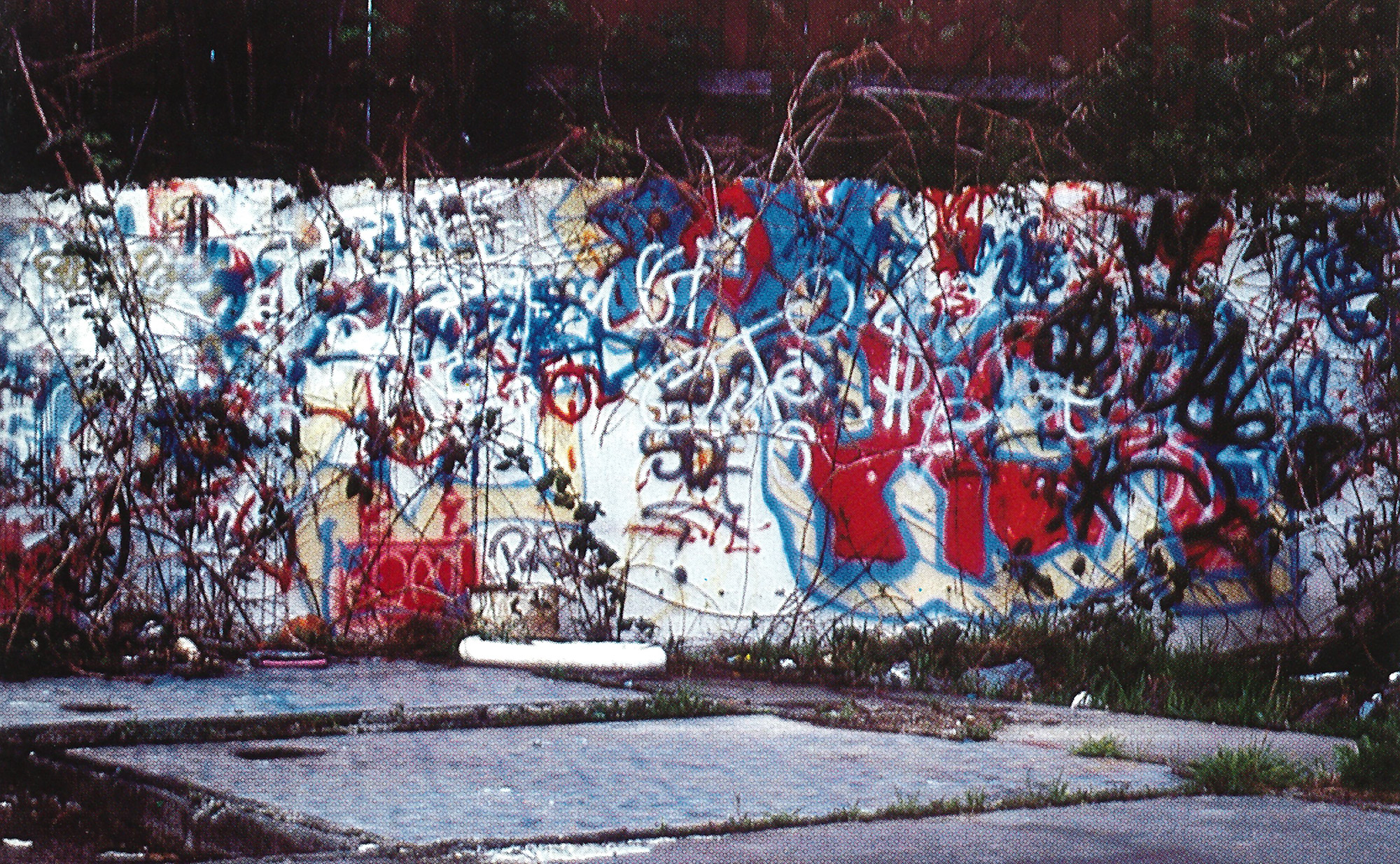
Vandalism or art? Graffiti straddles both worlds
By Jean Reichenbach | March 1991 issue
- UW Magazine Facebook
- Jump To Comments
K ilroy was here ... and there ... and everywhere. Anyone old enough to have experienced the American landscape between 1942 and 1956 remembers that Kilroy left his name on rocks, bridges, buildings and—during World War II and the Korean War—even on walls behind enemy lines.
Kilroy may be history but today, in America’s inner cities, there are still graffiti scrawls “behind enemy lines.” Some gang graffiti serves as a billboard announcing to streetwise cognoscenti that “I sell drugs here” or “I shoot people who don’t belong here” or a warning that “You are passing into enemy territory.”
Other gang-related scrawls are simply expressions of a basic adolescent urge to establish groups and set goals. A list of names or nicknames (called “tags” in graffiti culture), for example, may simply mean “We hang out together,” says a UW expert in graffiti.
Whether it’s Kilroy’s name or a gang member’s “tag,” the writers are exercising one of graffiti’s most important functions: providing people with little access to other means of public expression the opportunity to be heard, explains Rick Olguin. An American ethnic studies professor, Olguin became interested in the subject as a graduate student at Stanford University and is now writing a book about graffiti.

A 1976 photo shows both Anglo and Hispanic anti-war graffiti.
Actually, G.I.s and gang members are relative latecomers to this ancient medium of communication, protest and occasionally genuine art. The catacombs under the city of Rome, for example, bear names and symbols left by persecuted first century Christians.
Olguin describes visiting a ruin in Greece where one of the now-scattered building blocks bears a mark scratched into it by a stonemason 3,000 years ago. “At that moment something really clicked about this universal urge to write graffiti, or for people to write their initials in fresh cement or carve their name in a tree or a desk,” he recalls. “Fundamentally, graffiti is almost the universal way in which people express a fairly universal drive to be remembered.” And because it represents a universal human desire, Olguin deplores society’s tendency to “trivialize ” modern graffiti by “collapsing all of it into gang behavior.”
Olguin’s views notwithstanding, Sue Honaker, Seattle’s anti-graffiti coordinator, doesn’t hesitate to label as “graffiti vandals” the people who decorate walls that don’t belong to them.
Honaker can’t estimate how much graffiti removal costs the city of Seattle each year. But, she points out, the Seattle Public Library one year spent half its annual maintenance staff hours removing graffiti and Metro spent “well over $500,000” in one year cleaning graffiti from buses.
New York City spends $52 million annually in the battle against graffiti on its more than 6,000 subway cars, according to U.S. News and World Report . Last year, Time reported that annual U.S. costs run “into the billions.” Jay Beswick, founder of the National Graffiti Information Network, said in the same report that Los Angeles spends $28 million annually dealing with graffiti and Southern California cities together incur costs of $100 million.
“ It's not a question of art. It could be the Mona Lisa, but if it's on the side of your house, your rights are violated. ”
Sue Honaker, Seattle's anti-graffiti coordinator
“Basically, graffiti is any scrawl, writing, picture or marking on someone else’s property without their consent,” says Honaker, a 1984 UW alumna. “I don’t think there’s a person alive who has a problem with art,” she adds. “It’s not a question of art. It could be the Mona Lisa, but if it’s on the side of your house, your rights are violated.”
Olguin agrees that graffiti that encourages criminal behavior should be obliterated. But, he adds, society often fails to recognize that graffiti can also be art and a serious expression of cultural roots. “Not quite as complex as Navajo blanket weaving, but it has that kind of characteristic.”
Among Puerto Rican youth in New York City, for example, a master graffiti painter will draw out the mural and a group of apprentices, many of whom aspire to master status themselves, complete the project under his direction, says Olguin. “They’re seriously involved in learning a cultural aesthetic form of representation. It’s not just pure vandalism. … It’s art school just like Rubens.”
Olguin also ties graffiti to what he calls the “aesthetic of no empty space ” found in many cultures around the world. The walls of whole villages in remote parts of West Africa are painted in mural fashion, he says, and traces of these traditional motifs can be identified in African-American graffiti. “If these (African village) people occupied these offices,” he notes with a gesture toward the pristine perimeter of his Padelford office, “none of these walls would be white.”

Graffiti style makes its way into the mainstream in the lettering of this Chicano preschool sign.
The same aesthetic of filling empty space is also characteristic of pre-Columbian cultures. Walls in the ancient city of Teotehuacan, which 1,200 years ago had a population of 100,000, were entirely covered in floral murals, Olguin observes. Pre-Columbian designs, such as the feathered serpent or the step-pyramid shape, can be found today in graffiti in Mexican-American sections of cities such as Los Angeles and Albuquerque.
Olguin also ties the psychological mechanisms behind graffiti to the practice of ritual scarification (including the up-to-date “ritual scar” of pierced earlobes). He also likens it to tattoos (which he calls “personal permanent graffiti”), and even the current craze for message-bearing T-shirts, which are “thoroughly painless and another place you see all kinds of graffiti.” All of those practices, he says, reflect a deep human need to control our surrounding space.
Honaker, whose view is less academic, divides the graffiti she sees into several categories, including bubble gum (“John Loves Mary”), religious (“Jesus Saves” or “Allah Saves”), political, cartoon, gang and satanic which, she adds, is sometimes accompanied by evidence of animal mutilations such as a beheaded cat.
Each type of graffiti tends to have its own symbols. Satanist and white supremacist graffiti may be accompanied by the names of heavy metal rock ·bands such as Black Sabbath, Guns and Roses, Metallica and URU, Olguin notes. The pentagram, a five pointed star within a circle, is also a satanist symbol.
Disembodied heads are another common graffiti motif, Olguin notes, of which Kilroy, with his head and hands showing above a horizontal line, is a prime example. Chicano youth currently favor a front-view face with a goatee and perhaps a mustache, sunglasses and a fedora. Sculptors have been making disembodied heads for centuries whenever they create busts, Olguin points out. “It’s sort of canonical.”
One mysterious symbol that has cropped up in Seattle recently is a “weird squiggle,” in Olguin’s words, that at first glance suggests an Asian language. But experts at the Jackson School of International Studies have not been able to identify it. Sometimes, upon close inspection, the images resemble Roman letters elaborated almost to the point of being illegible, much like some of the illuminated manuscripts of the Middle Ages, notes Olguin, who remains mystified about what the messages signify or who is writing them.

A 1990 mural in Albuquerque, New Mexico, painted to discourage drug use, employs street graffiti styles.
Contemporary writers of political graffiti have adopted 19th century anarchist symbols such as a black flag or the letter A inside of a circle, Olguin notes, although he doubts they understand classic anarchist philosophy. “To them, anarchy means ‘There are no rules,’ which is different from ‘There is no government,’ which is what anarchy is about.”
As is often the case in popular culture, California can be a trendsetter in graffiti. Corporate symbols, such as the familiar bell of the telephone company, the logo of the Los Angeles Raiders, or oil company logos are popular territorial markers for Los Angeles gangs, says Honaker. “El Norte” and “El Sur” are gang designations seen throughout Northern and Southern California respectively. Such designations, including the gang names Bloods and Crips, tend to make their way north. One of Olguin’s friends has seen the word “Surrenos” in a neighborhood in West Seattle, the mark of a group of kids from a neighborhood in southern Orange County.
In contrast to some cities, Honaker notes, only about two percent of Seattle’s graffiti is the work of true gang members. Olguin agrees that the percentage is small. Most gang-type work is “copy cat,” in Honaker’s words, but she declines to make public the clues that allow her to tell the difference.
If gang graffiti is an expression of “I belong,” hate graffiti is a statement of separation, Olguin says. “You get a real statement of identity, not through connection to a space but through definition of an outgroup: ‘I am not gay’ … ‘I am not black’ … ‘I am not woman.”‘
The campus has seen a recent “flurry of really ugly racist stuff,” says Anne Guthrie, administrative manager in the UW’s facility management office. Guthrie ties the wave to a resurgence of racism both here and on American campuses in general. Official policy calls for the prompt removal of all graffiti, says Guthrie, but special efforts are made to remove racist and sexist scrawls within 24 hours.
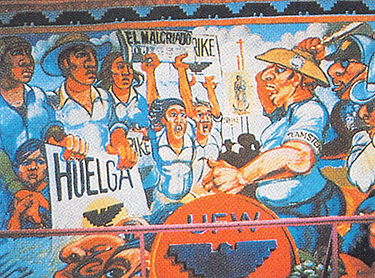
A mid-1970s mural in San Diego that promotes the United Farmworkers has not been defaced by graffiti in more than 10 years.
Political graffiti is also popular on campus, and is usually aimed at political and military hot spots from El Salvador to the Middle East. Favorite locations seem to be the west wall of campus facing 15th Avenue N.E., the back wall of Kincaid Hall near the Burke Gillman Trail and “Red Square” near the Odegaard Undergraduate Library, Guthrie says. The stairwells from the Central Plaza Garage are another popular target.
To Guthrie’s knowledge, no tally is kept of how much money and staff time is spent removing campus graffiti. But, she points out, in an era of limited budgets, every dollar or hour devoted to graffiti removal is that much less available for other, badly needed, purposes.
Removal techniques and costs vary according to the surface and the kind of paint used. Concrete can be painted over, cleaned with high pressure water hoses or sprayed over with what Honaker calls a “slurry” that, in effect, applies a thin layer of new concrete.
Brick and marble surfaces are especially expensive to clean, Honaker notes, and often require the use of chemicals which pose an environmental threat when they make their way through storm drains into rivers or other bodies of water.
Like Olguin, Honaker spends considerable time on the street getting to know the youth who engage in the graffiti. She tries to “stay away from the punitive” and works hard to maintain good relationships with known graffiti vandals who keep her up to date on “what’s new on the street,” she says.
Her experience leads her to believe that graffiti vandalism is an essentially anonymous behavior which permits individuals to, in her words, “rile without risk.” Youngsters who have failed to attract approval through academic, social or athletic achievement can, through graffiti, command a moment in the sun, she notes. Take, for example, the New York City youth who slipped into a zoo at night and spray-painted graffiti on the back side of an elephant. “He had a good story to tell at school the next day,” Honaker notes.
Most youthful vandals are from the lower economic levels, Honaker says, but the activity also attracts affluent children who “put up graffiti or run with a tag team” as a way to add a sense of risk to otherwise orderly, safe lives. A “tag team,” she explains, often consists of an artist, a lookout, and someone adept at stealing paint—which can be a major undertaking and is often a point of honor in itself. “A good piece can take as many as 500 spray cans,” she adds.
Whenever possible Honaker tries to persuade the best of the painters to design and paint murals on walls offered for that purpose by Seattle business people. The city already boasts dozens of such productions.
“There’s a lot of really good talent out there,” she notes. “Good people who are misdirected.”
Olguin urges that we work harder to re-channel not just the art but also the energy of the youths who participate in it. These youngsters, with their graffiti and gang behavior, are exploring the limits of society’s rules, he notes. “It seems to me that (exploring these limits) is what entrepreneurial societies are all about, what aesthetically creative and dynamic societies are all about.”
At top: A 1990 photo of a retaining wall on Rainier Avenue South in Seattle that is covered with hundreds of “tags.”
Jean Reichenbach is associate editor of Columns.
Be boundless
Connect with us:.
© 2024 University of Washington | Seattle, WA
Conservation, exposition, Restauration d’Objets d’Art
Home Issues HS Vandalism and Art The duality of Graffiti: is it va...
The duality of Graffiti: is it vandalism or art?
Introduction.
1 Graffiti is found in many societies with different cultural contexts and has become a witness and an ethnographic source of information on urban art development (Waclawek, 2011). Modes of expression are mainly related to visibility, notoriety, choice of venue, transgression, and are often a mean to react and protest while remaining anonymous, by illegally introducing messages in the public space. Contemporary graffiti is also described by its controversial issues between social, style and aesthetic forms along with vandalism aspects. Facing a worldwide plethoric production, the assumption that Graffiti is a positive urban art form raises some paradoxical questions regarding ephemerality and “visual pollution” with a growing art market demand. However, it is often seen as illicit production and vandalism asset. For instance, removing graffiti or restricting the practice of graffiti from the public space has been a controversial issue for artists and authorities. A question therefore arises: how can the aesthetic and pictorial aspects of these acts of creation be considered as acts of vandalism? ( Bengsten, 2016).
Fig. 1 Vandalism

Vandalism by Goon and Chick, 1985
© Henry Chalfant and James Prigoff
Fig. 2 Vandalism?

Keith Haring, New York, 1983
© Laura Levine/Corbis
The problem of temporality
2 Similarly, the notion of temporality, by dissociating conservation and transmission must be considered. The growing interest leads to different perceptions probably with greater attention to the act of "heritage" at the expense of the act of protest. The patrimonialization of graffiti and, to a large extent, of Street Art is an essential point, because graffiti writers or street art practitioners often see institutions as "looters" who, come to preserve cultural acts that other public institutions have condemned (Omodeo, 2016).
3 Heritage is primarily a process which, in principle, prevents any destruction or voluntary surrender of an artwork, which are a corollary of creation and its limitation of copyright in time. For most “writers”, Graffiti is not an act thought out on the basis of a future conservation. The issue is visibility and notoriety, by the number, size and/or the choice of venue. Regarding paint materials, so many spray paint brands are available to the general public in hardware stores. Graffiti writers would not necessarely comply with this rule as their preferences for brands are more related to habits, opportunities and word of mouth, along with, plastic qualities and not for resistance properties.
Alterations
4 If Graffiti question the artistic approach of the artist and the context of their creation, it also poses those of alteration mechanisms, sometimes irreversible, these colors, which are significant from the point of view of heritage conservation. This encourage today to have a different perspective than that of the material history of the work with the creative process, the components used and the effects of environment parameters and ultimately, of time (Colombini, 2017).
5 The traditional methods of conservation are questioned; which must intervene and what modifications in relation to the original one can be accepted? (Beerkens, 2005). Is it essential to invite the artist to take part in the heritage process? One must look at the field of Muralism, mainly in the USA, to find more innovative and frequent restoration procedures. Indeed, the restoration of murals, often monumental paintings, is a civic and collective act within the "neighborhood". The actors of the restoration/renovation are both volunteer civilians trained and supervised by experienced conservators, artists and more generally, of persons engaged in neighborhood committees (Shank, 2004). This is not without rewards and sometimes reveals abuses that go beyond the artistic acts.
Fig. 3 Conservation

Community mural conservation
© 2014 Mural Conservancy of Los Angeles
Fig. 4 A public Art project, 1985

6 The practice of graffiti and its legislation ambiguities are at stake. Graffiti and Street Art have their own definitions and interpretations, but they have something in common with illegal acts when it comes to the artistic act carried out on surfaces without the given permission by a property owner, whether public or private. We are now witnessing a radicalization of practices both from two points of view: legality and vandalism. The character of these acts explains why some artists (not only from the graffiti scene) have seen their career highlighted with arrests, penalties and sometimes trials, while their works are copyrightable (Moyne, 2016).
7 T he question of authenticity of paint arises when, aesthetic and style expertise, may not be sufficient to ascertain whether the juridical designation of Street Art as “Art” versus graffiti as vandalism. This is even truer for legal graffiti, mainly because of the variability of quality of the known and the good quality of spray paints, supposedly meant to last, as opposed to, the use of cheap brands of spray paint as illegal graffiti (Marsh, 2007).
Duality of the phenomenon
8 This paper relates to the duality of the modern graffiti phenomenon, as to whether it is a vandalism act or a cultural production. It focusses on a comparison study, mainly through artist interviews, between the evolving graffiti practices in Western major cities where illegality is often reclaimed by artists, and the fast emergence of graffiti in China, where this artistic expression is not only watched through its illegal and vandalism forms, but also for its aesthetic perceptions, though practices happen in restricted areas for expressing social, anti-official and political actions (Valjakka, 2011). Graffiti are buffed, almost straight away, by city cleaners the so called “buffers”, who are in the streets to remove all sorts of inscriptions from plumbers to whatever girl ads. If they cannot scrap it out, they paint over and that is why graffiti never lasts. At the same time, the relationship with authorities has improved very much over the last few years. It is more and more common to negotiate with the police by explaining what graffiti writers are doing, colours and mode of expression for everybody, in order to, embellish the streets rather than litter or vandalize them. From a civilization where calligraphy has been the core of the artistic production, the writing on a wall has different meanings than in a Euro-American context (gangs and political + social protests). Confronting these two almost opposite approaches, it allows a better understanding of this artistic form, as to whether it is considered vandalism or art. This controversial interrogation can be illustrated by the artist Bando’s quote “Graffiti is not vandalism, but a very beautiful crime”.
List of illustrations
Electronic reference.
Alain Colombini , “ The duality of Graffiti: is it vandalism or art? ” , CeROArt [Online], HS | 2018, Online since 09 December 2018 , connection on 31 May 2024 . URL : http://journals.openedition.org/ceroart/5745; DOI : https://doi.org/10.4000/ceroart.5745
About the author
Alain colombini.
Contemporary art scientist. Centre Interdisciplinaire de Conservation et de Restauration du Patrimoine (CICRP), Marseille – France
By this author
- Les matériaux en polyuréthanne dans les œuvres d’art : des fortunes diverses. Cas de la sculpture « Foot Soldier » de Kenji Yanobe [Full text] Published in CeROArt , 2 | 2008

The text only may be used under licence CC BY-NC-ND 4.0 . All other elements (illustrations, imported files) are “All rights reserved”, unless otherwise stated.
The journal
- Presentation
- Information for authors
- Scientific Committee and editorial board
Full text issues
- HS | 2021 Imiter le textile en polychromie à la fin du Moyen Âge. Le brocart appliqué
- 12 | 2020 Flux 2020-2021
- 11 | 2019 Flux 2019
- HS | 2018 Four Study Days in Contemporary Conservation
- HS | 2017 Education and Research in Conservation-Restoration
- HS | Juin 2015 Tribute to Roger Marijnissen
- 10 | 2015 La restauration, carrefour d’interrelations
- HS | 2014 Teaching Conservation-Restoration
- 9 | 2014 The conservator-restorer’s knowledge and recognition
- HS | 2013 Conservation: Cultures and Connections
- HS | 2013 De l’art et de la nature
- HS | 2013 Le faux, l’authentique et le restaurateur
- 8 | 2012 Politiques de conservation-restauration
- HS | 2012 La restauration des œuvres d’art en Europe entre 1789 et 1815 : pratiques, transferts, enjeux
- 7 | 2011 Science et conscience
- 6 | 2011 Réinventer les méthodologies
- 5 | 2010 La restauration en scène et en coulisse
- 4 | 2009 Les dilemmes de la restauration
- 3 | 2009 L’erreur, la faute, le faux
- 2 | 2008 Regards contemporains sur la restauration
- 1 | 2007 Objets d’art, œuvres d’art
EGG Special Issues
- EGG 6 | 2017 First publications from young graduates in conservation
- EGG 5 | 2016 First publications from young graduates in conservation
- EGG 4 | 2014 First publications from young graduates in conservation
- EGG 3 | 2013 First publications from young graduates in conservation
- EGG 2 | 2012 First publications from young graduates in conservation
- EGG 1 | 2010 First publications from young graduates in conservation
- Call for papers
Information
- Mentions légales et Crédits
- Publishing policies
Newsletters
- OpenEdition Newsletter
In collaboration with

Electronic ISSN 1784-5092
Read detailed presentation
Site map – Syndication
Privacy Policy – About Cookies – Report a problem
OpenEdition Journals member – Published with Lodel – Administration only
You will be redirected to OpenEdition Search
Not all graffiti is vandalism – let’s rethink the public space debate
Researcher in the Philosophy of Play, The University of Queensland
Disclosure statement
Liam Miller does not work for, consult, own shares in or receive funding from any company or organisation that would benefit from this article, and has disclosed no relevant affiliations beyond their academic appointment.
University of Queensland provides funding as a member of The Conversation AU.
View all partners
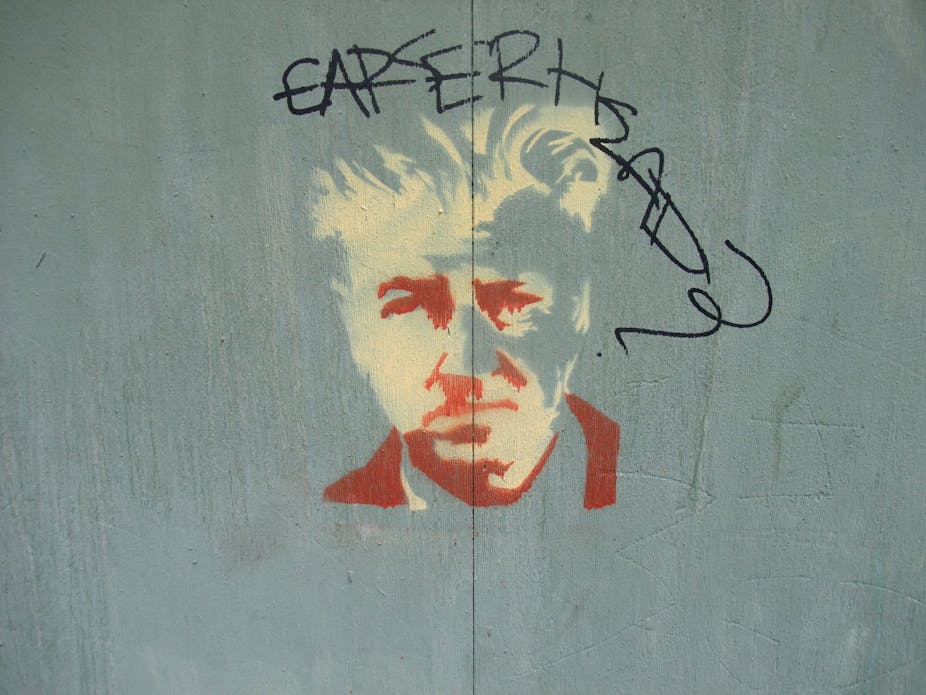
Earlier this month, at the opening of an exhibition dedicated to his work at Brisbane’s GOMA, David Lynch got stuck into street art, calling it “ugly, stupid, and threatening”. Apparently, shooting movies can be very difficult when the building you want to film is covered in graffiti and you don’t want it to be.
Is there a distinction between art and vandalism? This is the question that always seems to rise up when graffiti becomes a topic of conversation, as it has after Lynch’s outburst. This is, however, not just important for those of us who want to know the answers to obscure questions such as, “what is art?” It affects everyone.
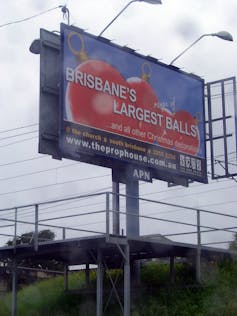
Why? Because graffiti exists in our public spaces, our communities and our streets.
Let’s for a minute put aside the fact that an artist such as David Lynch, known for pushing the envelope in terms of what art is and can be, is criticising one type of art on the grounds that it is inconvenient to the kind of art that he prefers to undertake.
There is something more important to discuss here. The opinion that street art is vandalism (that is, not art) is widely held. Many people despise graffiti – but we are more than happy to line our public spaces with something much more offensive: advertising. That’s the bigger story here, the use and abuse of public space.
At heart, I think this is why people don’t like graffiti. We see it as someone trying to take control of a part of our public space. The problem is, our public spaces are being sold out from under us anyway. If we don’t collectively protect our public spaces, we will lose them.
Two types of graffiti
I would like to make a bold distinction here.
I want to draw out the difference between two kinds of graffiti: street art and vandalism.
We need something to be able to differentiate between Banksy and the kids who draw neon dicks on the back of a bus shelter. They are different, and the difference lies in their intention.
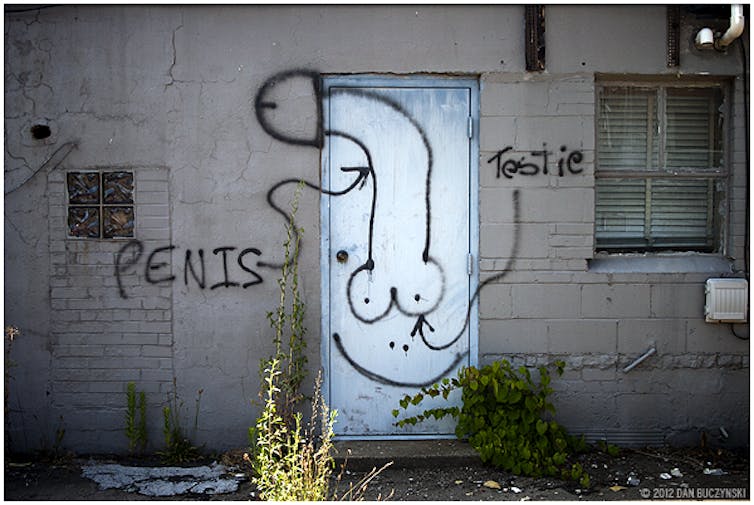
Tagging, the practice of writing your name or handle in prominent or impressive positions, is akin to a dog marking its territory; it’s a pissing contest. It is also an act of ownership. Genuine street art does not aim at ownership, but at capturing and sharing a concept. Street art adds to public discourse by putting something out into the world; it is the start of a conversation.
The ownership of a space that is ingrained in vandalism is not present in street art. In fact, street art has a way of opening up spaces as public. Street art has a way of inviting participation, something that too few public spaces are even capable of.
Marketing vandals
If vandalism is abhorrent because it attempts to own public space, then advertising is vandalism.
The billboards that line our streets, the banner ads on buses, the pop-ups on websites, the ads on our TVs and radios, buy and sell our public spaces. What longer lasting sex? A tasty beverage? To be young, beautiful, carefree, cutting edge, and happy? For only $24.95 (plus postage)!
Advertising privatises our public spaces. Ads are placed out in the public strategically. They are built to coerce, and manipulate. They affect us, whether we want them to or not. But this is not reciprocated.
We cannot in turn change or alter ads, nor can we communicate with the company who is doing the selling. If street art is the beginning of a conversation, advertising is the end. Stop talking, stop thinking – and buy these shoes!
Ads v graffiti
We are affronted by ads. They tell us we are not enough. Not good enough, not pretty enough, not wealthy enough.
At its worst, graffiti is mildly insulting and can be aesthetically immature. But at its best, it can be the opening of a communal space: a commentary, a conversation, a concept captured in an image on a wall. Genuine street art aims at this ideal.

At its best, advertising is an effective way of informing the public about products and services. At worst, advertising is a coercive, manipulative form of psychological warfare designed to trick us into buying crap we don’t need with money we don’t have.
What surprises me is that the people who find vandalism in the form of tagging and neon dicks highly offensive have no problem with the uncensored use of our public spaces for the purposes of selling stuff.
What art can do
If art is capable of anything in this world, it is cutting through the dross of everyday existence. Art holds up a mirror to the world so that we can see the absurdity of it. It shows us who we really are, both good and bad, as a community.
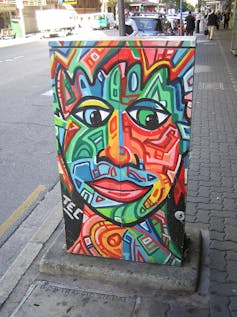
Street art has an amazing ability to do this because it exists in our real and everyday world, not vacuum-sealed and shuffled away in a privileged private space. Its very public nature that makes street art unique, powerful, and amazing.
If we as a community can recognise the value in street art, we can begin to address it as a legitimate expression. When we value street art as art, we can engage with it as a community and help to grow it into something beautiful.
When street art has value, our neon dicks stop being a petty and adolescent attempt at ownership, and become mere vandalism. When we value our public spaces as places where the we can share experiences, we will start to see the violence that is advertising as clearly as the dick on the back of a bus shelter.
- Advertising
- David Lynch

Senior Research Fellow - Women's Health Services

Data Manager

Research Support Officer

Director, Social Policy

Head, School of Psychology
Academia.edu no longer supports Internet Explorer.
To browse Academia.edu and the wider internet faster and more securely, please take a few seconds to upgrade your browser .
Enter the email address you signed up with and we'll email you a reset link.
- We're Hiring!
- Help Center

Defining Graffiti: Art or Vandalism

A draft proposal for a paper about graffiti
Related Papers
Frandika Permana
Donald Richardson
Stefano Bloch
In this piece I argue against common defenses of graffiti.
Routledge eBooks
Graeme Evans
The Journal of American Culture
Carl Horowitz
Ondřej Škrabal , Leah Mascia , Ann Lauren Osthof , Malena Ratzke
An on-line workshop exploring the extent of graffitiing practices from antiquity to the present day and the diversity of scholarly traditions dealing with them. Registration at https://www.csmc.uni-hamburg.de/register-workshop3.html.
Geert J Verhoeven , Jona Schlegel , Massimiliano Carloni , Giulia Flenghi , Paola Guerreschi , Alessandra Meschini , Nora Shalaby , Martin Wieser
This is the book of abstracts created for the goINDIGO 2023 international graffiti symposium organised in the framework of the academic project INDIGO.
Inopinatum: Graffiti and Urban Creativity
Lachlan J MacDowall , Christian Ruggiero , Luca Borriello
Ivanka Stabreff Salazar , Cameron McAuliffe
In this paper, we critically review the literature on graffiti and street art with a view to bridging the divide between the stark extremities of public graffiti discourse. We make the case for moving beyond singular responses to the challenges posed by graffiti – into the complex terrain between visions of a city free from graffiti and one where public art has free rein. To this end, we have chosen a series of interrogations of common dialectical positions in talk of graffiti: is it art or crime; is it public or private expression; is it necessarily ephemeral, or does it seek permanence; is it a purely cultural practice, or is it economic? Our list is by no means exhaustive, but it does go some way to uncovering the complexity of graffiti's dynamic and contested geographies.
Street Art & Urban Creativity Scientific Journal
Malcolm Jacobson
There is an abundance of books, magazines, films and internet-forums dedicated to graffiti. How this documentation has influenced and been a part of the graffiti subculture has not been studied much. Drawing on personal experiences, as a documentarian and publisher of graffiti media over 27 years, Malcolm Jacobson recollects how the positions of participant and observer incessantly have twisted around each other. This has been mediated through development in media technology as well as by the coming of age of graffiti and its practitioners.
RELATED PAPERS
Eduardo Rocha Fernández
Wydawnictwo Uniwersytetu Śląskiego
Mateusz Zeifert
DNA Research
Madalina Vlad
Revista da FAEEBA - Educação e Contemporaneidade
Claudia Moura
ACTA MOLDAVIAE MERIDIONALIS, Anuarul Muzeului Județean ,, Ștefan cel Mare” Vaslui, Vol. 2, 2018, ISSN 0257-7372
Leo Ionescu
Surgical Endoscopy and Other Interventional Techniques
Reza Zahiri
Ki̇tābu’l İdrāk Li̇-li̇sāni̇’l Etrāk’te Alinti Keli̇meler: İlaveler
Gilvane Belem Correia
Tokovi istorije
Husnija Kamberovic
Revista Encantar
Jaqson Alves Santos
Mechanism and Machine Theory
Giacomo Mantriota
Hemant Ghate
Mary Baginsky
Marquette毕业证书 马凯特大学学位证
Renewable Energy
Constantinos Balaras
Disability & Society
Teodor Mladenov
Environmental Engineering and Management Journal
Cristinel Racoceanu
Journal of European Studies
Julian Preece
Journal of Development Studies
Kate Meagher
RELATED TOPICS
- We're Hiring!
- Help Center
- Find new research papers in:
- Health Sciences
- Earth Sciences
- Cognitive Science
- Mathematics
- Computer Science
- Academia ©2024
Graffiti Art: Why Graffiti Is Art And Not Vandalism
Although graffiti is generally considered to be a contemporary artform, it actually originated thousands of years ago. The earliest examples are things like cave paintings and inscriptions on ancient buildings in Egypt, Greece and the Roman Empire, with the word ‘graffiti’ itself stemming from the Italian word graffiato, meaning ‘scratched’. Yet as the art form has evolved, so have the connotations surrounding it, and at present, turning walls into canvases remains nothing more than vandalism according to US law.
Editorial Team , Oct 3, 2023
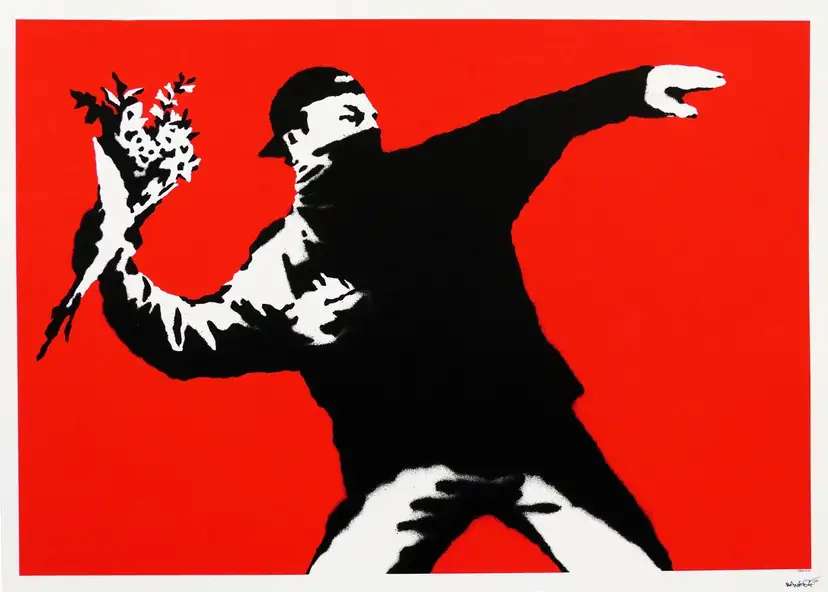
The debate over whether graffiti constitutes art or vandalism is incredibly complex, and depends on many factors, such as the location of a particular piece, and the quality and message of the design. There is no clear answer, and it’s easy to see both sides of the debate — after all, not everyone would be happy to have their property painted without their consent. On the flip side, it could also be argued that graffiti is an artist’s right to freedom of expression, and a way to ensure their work can be appreciated by those beyond the artistic elite.
However, we champion plenty of graffiti artists here at ArtLife, and even though there will always be exceptions, we stand firm that graffiti is deserving of its status as art for the following reasons:
Graffiti Takes Technical Skill
A great deal of talent is required to create brilliant artwork, and graffiti is no exception. In fact, there are plenty of street artists whose work clearly displays an immense level of technical ability. Take Retna, for example, who has gone beyond painting walls to cover entire buildings with his distinct calligraphic style, such as the 21-story Cuauhtemoc building in Mexico City. This unbelievably complex achievement required a great deal of strategic planning and real imagination to pull off, as well as a clear understanding of color and composition. This may not be true of all graffiti creations — many critics would argue that you don’t need talent to paint a scruffy tag. However, art is subjective, and there will always be ‘good’ and ‘bad’ artists within every movement. Those like Retna prove that, as in any art form, graffiti can be exceptional when created by someone with impressive skill.
It Exemplifies Freedom Of Expression
Art ceases to be art without freedom of expression, and perhaps graffiti exercises this right more than any other medium. Taking creativity to the streets means that the artists don’t need to worry about gallery curators, critics or potential buyers, and can therefore be completely unrestrained, and even anonymous if they so choose. Status doesn’t matter, and the lack of limitations allow graffiti artists to break conventions and push boundaries to create even more exciting — and arguably more authentic — works of art.
Political And Social Themes Are Powerfully Represented
Many of the most renowned artworks make a powerful comment on the social and political issues of their time, and graffiti can make a huge impact in this respect. Just look at Banksy, who has become world-famous for his humorous and subversive commentaries like Love is in the Air, first painted on Jerusalem’s West Bank barrier in 2003 as a statement in favor of Palestinian rights. Similarly, Keith Haring was able to bring mass attention to the crack epidemic through his Crack is Wack mural, as well as homosexuality and the AIDS crisis. Plenty of aficionados would argue that it’s art’s duty to shed light on such topics, and given that these themes relate to ordinary people, perhaps it’s unsurprising that the most iconic examples were created on the streets the target audience live on.
Impressive Works Bring Drab Spaces To Life
As well as having meaning, art is also valued for its beauty, and there’s no denying how beautiful some graffiti can look, which is why street art tours are now so popular all over the world. Even though graffiti is generally free to access, more and more people are willing to pay to see some of the most magnificent works in the city of choice. Bold colours, shapes and patterns are key features of this art form, and when artists let their imaginations run wild, their creations instantly transform drab spaces into places people are excited to be. Seeing as art is used to decorate the walls of our homes, couldn’t it be argued that graffiti does the same to the walls outside?
Huge Sales Demonstrate Its Artistic Value
Anyone arguing that graffiti isn’t art may struggle to explain why people have paid so much for it in recent years. For example, Untitled by Jean-Michel Basquiat sold for a huge $110.5 million in 2017, the most expensive American painting ever to sell at auction at the time, while Banksy’s Girl with Balloon sold for $1.37 million. Other expensive pieces include Retna’s Untitled ($38,000) and Charlie Chaplin by Mr. Brainwash ($100,000). Not everyone would agree that an artwork’s value is determined by its price tag, however the fact that graffiti can sell for such high sums proves the respect and prestige it has generated within the art community, and it would therefore be entirely reductive to claim all graffiti is mere vandalism.
Home — Essay Samples — Arts & Culture — Graffiti — Essay On Graffiti Is Vandalism
Essay on Graffiti is Vandalism
- Categories: Graffiti Vandalism
About this sample

Words: 758 |
Published: Mar 14, 2024
Words: 758 | Pages: 2 | 4 min read

Cite this Essay
Let us write you an essay from scratch
- 450+ experts on 30 subjects ready to help
- Custom essay delivered in as few as 3 hours
Get high-quality help

Prof. Kifaru
Verified writer
- Expert in: Arts & Culture Law, Crime & Punishment

+ 120 experts online
By clicking “Check Writers’ Offers”, you agree to our terms of service and privacy policy . We’ll occasionally send you promo and account related email
No need to pay just yet!
Related Essays
2 pages / 1128 words
1 pages / 250 words
1 pages / 496 words
2 pages / 1219 words
Remember! This is just a sample.
You can get your custom paper by one of our expert writers.
121 writers online
Still can’t find what you need?
Browse our vast selection of original essay samples, each expertly formatted and styled
Related Essays on Graffiti
You have no doubt seen graffiti painted on buildings, bridges, and walls. Many people dismiss it as vandalism, but others consider it a legitimate form of art. In this essay, I will discuss the cultural and social significance [...]
Contemporary art is the art of today, produced in the 21st century. It differs from the modern art, which is art of a style marked by a significant departure from traditional styles and values. Contemporary came after the modern [...]
Banksy. (2019). Banksy . Available at: 2021).
The focus of this dissertation is to explore graffiti and street art and explain why this art form deserves to be respected. I will be challenging the negative connotations of street art and graffiti by looking at how graffiti [...]
Graffiti artwork has always been something people disregard. People pass it by on the walls of alleyways, on bridges, on train cars, and never pay much attention. The world looks at graffiti as something rebellious teens do to [...]
Graffiti is defined as writing or drawings scribbled, scratched, or sprayed illicitly on a wall or other surface on a public place. Its dictionary definition uses the word illicit which means that it is not permitted or is [...]
Related Topics
By clicking “Send”, you agree to our Terms of service and Privacy statement . We will occasionally send you account related emails.
Where do you want us to send this sample?
By clicking “Continue”, you agree to our terms of service and privacy policy.
Be careful. This essay is not unique
This essay was donated by a student and is likely to have been used and submitted before
Download this Sample
Free samples may contain mistakes and not unique parts
Sorry, we could not paraphrase this essay. Our professional writers can rewrite it and get you a unique paper.
Please check your inbox.
We can write you a custom essay that will follow your exact instructions and meet the deadlines. Let's fix your grades together!
Get Your Personalized Essay in 3 Hours or Less!
We use cookies to personalyze your web-site experience. By continuing we’ll assume you board with our cookie policy .
- Instructions Followed To The Letter
- Deadlines Met At Every Stage
- Unique And Plagiarism Free
Yale Daily News
| Is Graffiti Art or Vandalism? Yes.

Is Graffiti Art or Vandalism? Yes.
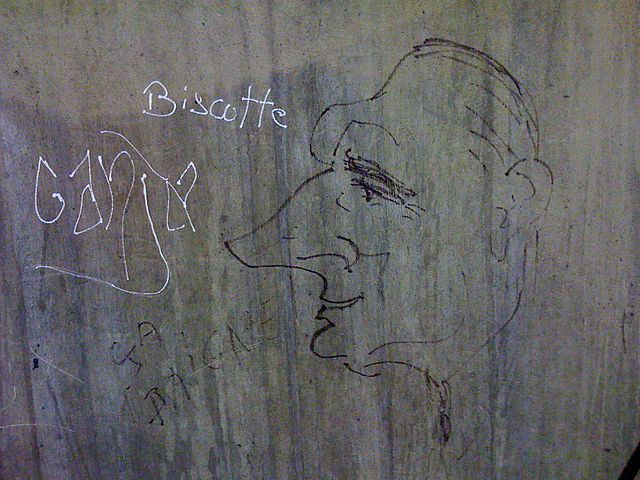
BY ASHLEY ZHOU
Defined as the unauthorized marking of public space by an individual or group, graffiti dates back to prehistoric times.
Ancient cave art, like the Lascaux cave paintings in France, shares remarkable similarities with modern-day graffiti. Thousands of years later, during World War II, it became popular for soldiers to write the phrase “Kilroy was here,” along with a sketch of a bald figure with a large nose peeking over a ledge.
As time progressed graffiti has evolved from crude, simple tags and become increasingly technical and complex, developing into large, artistic, and colorful pieces. As graffiti is unauthorized and illegal, by the 1980s, the city of New York began to crack down on its proliferation and dedicated a massive amount of resources to solving the graffiti “problem.” However, graffiti artists saw these as mere challenges and worked even harder to hit their targets. Graffiti was anything but eradicated. In fact, it has spread around the world.
“Graffiti, at its core, is both vandalism and art. In my opinion, graffiti is 100% art and 100% vandalism,” said Henry Zhou, a student artist in Los Angeles, California.
Zhou noted that graffiti is the voice of those who perhaps cannot find other ways to voice themselves and express themselves.
Zhou compared graffiti to the Dada movement, a reaction to World War I which rejected logic and civilization, embracing irrationality, non-sense, and chaos in artistic works. Both movements, he said, have challenged the social norms of society.
“Unlike traditional and institutionalized art forms, graffiti is rebellious and defiant, presenting a new form of art and creativity,” Zhou said. “At the same time, graffiti is vandalism, a crime, as it is an act of defacing public property without permission.”
The prevention and removal of graffiti in a community can be very costly and ineffective, he added.
The very reaction it arouses from the public and the government as vandalism makes graffiti graffiti, and it pushes the boundaries of art, Henry concluded. He is not alone in these beliefs.
Shayla Waldron is a young artist, majoring in the arts at college, and a volunteer at a nonprofit arts organization fighting for social justice. Like Zhou, Waldron also strongly said graffiti was art despite being vandalism.
She described graffiti as a form of self-expression, that adds character to the cities and buildings it is on.
“People express themselves in so many different ways artistically that I just consider it [graffiti] another form of that,” Waldron said. “ I’ve seen some amazing works of art done by graffiti artists.”
In addition, Shayla noted that because of the legality aspect of graffiti, the perceived value of graffiti differs greatly for people.
Waldron noted that graffiti was a “prime example of how art is subjective.” From an outsider or someone who doesn’t understand the art of graffiti, it may not seem like art, while others who appreciate it may see it as an expression of self, love, and life.
Indeed, perhaps there isn’t a clear answer to whether graffiti is art or vandalism, and there needs not be – after all, like all art, graffiti is valuable, but the value is subjective.
Search form
- Study break
- Magazine zone
Graffiti: art or vandalism?

There is graffiti in almost every city in the world. Read this article to learn more about Britain's most famous graffiti artist.
Instructions
Do the preparation task first. Then read the article and do the exercises to check your understanding.
Preparation
Where do you expect to see graffiti? Probably not in a museum. Bristol Museum and Art Gallery, in the south-west of England, was the kind of place you went to see classical statues and stuffed animals in cases until the arrival of the ‘Banksy versus the Bristol Museum’ exhibition in the summer of 2009. The exhibition hosted more than 100 works by Banksy, one of the world’s most famous graffiti artists.
Banksy is a man of mystery. He hardly ever gives interviews and likes to be anonymous. Nobody knows much about his life or his background but many people believe that his real name is either Robin Gunningham, Robert Banks or Robin Banks and that he was born in 1973 near Bristol.
Banksy’s controversial ‘street art’ includes spray paintings on live sheep and cows and graffiti on the huge wall erected to divide Israel and Palestine. Brad Pitt spent over $2 million on a Banksy original. Banksy designed an album cover for the Britpop group Blur in 2003 but he has refused at least four requests to do adverts for Nike. A year after the Bristol exhibition, Banksy made a film called Exit Through the Gift Shop . The film tells the story of a French street artist in America. Exit Through the Gift Shop received many positive reviews. Nobody knows if it was about a real artist or an invented character from Banksy’s imagination.
Bristol isn’t the only place in Britain to welcome graffiti. The DPM Park in Dundee, Scotland has the longest legal graffiti wall (almost 110m long) in the UK. Anyone can paint on the council-owned wall any time they like. Mike Crilley, the graffiti wall project organiser, promotes the positive side of graffiti and runs workshops for local children.
Is everyone doing graffiti? Can we do graffiti where we want these days? Not exactly. It’s illegal to paint on somebody else’s property so make sure you find a legal graffiti wall like the one in Dundee if you want to have a go.
Check your understanding: true or false
Check your understanding: matching, check your understanding: gap fill, worksheets and downloads.
Is there a lot of graffiti in your town or city? Are there any famous street artists like Banksy where you live?

Sign up to our newsletter for LearnEnglish Teens
We will process your data to send you our newsletter and updates based on your consent. You can unsubscribe at any time by clicking the "unsubscribe" link at the bottom of every email. Read our privacy policy for more information.
Is Graffiti Art or Vandalism in America?
This essay about the debate surrounding graffiti in America, questioning whether it should be considered as artistic expression or vandalism. It explores the complexities of graffiti as both an illegal act and a form of cultural commentary, acknowledging the tensions between art and law. While some argue that graffiti enhances urban environments and provides a voice for marginalized communities, others emphasize its criminality and disregard for property rights. Despite differing opinions, the essay emphasizes the need for thoughtful consideration and dialogue on this multifaceted issue.
How it works
Graffiti has long been a contentious subject in American society, with passionate arguments on both sides of the debate. Some view it as a form of artistic expression, while others see it simply as vandalism. However, the reality is far more complex than these simplistic viewpoints suggest.
At its core, graffiti is an art form. It is a means of self-expression for individuals who may not have access to more traditional forms of artistic expression. Graffiti artists use walls, buildings, and other public spaces as their canvas, transforming ordinary surfaces into vibrant works of art that reflect their thoughts, feelings, and experiences.
In this sense, graffiti can be seen as a form of cultural commentary, a way for marginalized voices to be heard in a society that often ignores them.
But while graffiti may be art, it is also illegal. The unauthorized defacement of public or private property is a criminal act, and graffiti artists who engage in it can face fines, jail time, and other legal consequences. This raises important questions about the relationship between art and law, and whether artistic expression should be subject to the same rules and regulations as other forms of behavior.
One argument often made in defense of graffiti is that it adds to the vibrancy and character of urban environments. Indeed, many cities around the world have embraced graffiti as a legitimate form of street art, commissioning murals and other works to beautify public spaces and deter vandalism. However, there is a fine line between sanctioned street art and illegal graffiti, and not all graffiti artists are interested in creating art that is socially or aesthetically valuable.
Ultimately, the question of whether graffiti is art or vandalism is a subjective one, and different people will have different opinions on the matter. What is clear, however, is that graffiti has become an integral part of the cultural landscape in America, challenging traditional notions of art and public space. As such, it is a phenomenon that cannot be easily dismissed or ignored, but rather one that demands thoughtful consideration and dialogue.
Cite this page
Is Graffiti Art Or Vandalism In America?. (2024, Apr 07). Retrieved from https://papersowl.com/examples/is-graffiti-art-or-vandalism-in-america/
"Is Graffiti Art Or Vandalism In America?." PapersOwl.com , 7 Apr 2024, https://papersowl.com/examples/is-graffiti-art-or-vandalism-in-america/
PapersOwl.com. (2024). Is Graffiti Art Or Vandalism In America? . [Online]. Available at: https://papersowl.com/examples/is-graffiti-art-or-vandalism-in-america/ [Accessed: 1 Jun. 2024]
"Is Graffiti Art Or Vandalism In America?." PapersOwl.com, Apr 07, 2024. Accessed June 1, 2024. https://papersowl.com/examples/is-graffiti-art-or-vandalism-in-america/
"Is Graffiti Art Or Vandalism In America?," PapersOwl.com , 07-Apr-2024. [Online]. Available: https://papersowl.com/examples/is-graffiti-art-or-vandalism-in-america/. [Accessed: 1-Jun-2024]
PapersOwl.com. (2024). Is Graffiti Art Or Vandalism In America? . [Online]. Available at: https://papersowl.com/examples/is-graffiti-art-or-vandalism-in-america/ [Accessed: 1-Jun-2024]
Don't let plagiarism ruin your grade
Hire a writer to get a unique paper crafted to your needs.

Our writers will help you fix any mistakes and get an A+!
Please check your inbox.
You can order an original essay written according to your instructions.
Trusted by over 1 million students worldwide
1. Tell Us Your Requirements
2. Pick your perfect writer
3. Get Your Paper and Pay
Hi! I'm Amy, your personal assistant!
Don't know where to start? Give me your paper requirements and I connect you to an academic expert.
short deadlines
100% Plagiarism-Free
Certified writers
- About Graffiti Know How
- Terms of Service and Privacy Policy

All You Need to Know About Graffiti

Is Graffiti Art or Vandalism?
The perspective of graffiti in society.
The most raging debate about street art always has been, is graffiti art or vandalism? In many parts of the world, especially those who do not understand its nature, graffiti is considered vandalism. But, what if it’s just a misconception of the real artist meaning?

Reasons Why Graffiti is Art
Serious artists use graffiti as a form of genuine expression. They help start important conversations about social, political and environmental issues. Often, graffiti creators and artist use public spaces to express themselves, which rouses the issue of vandalism.
There is always a thin line between graffiti as art or vandalism. When graffiti is done in a public space, where other people find it unsightly or offensive, then it is considered as vandalism.
That may not take away the message intended by the creator because once the public has seen the art behind and drawn attention to it, the creator’s intention is fulfilled.
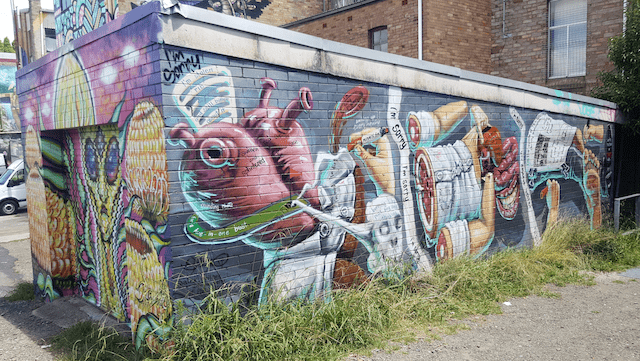
On the other hand, graffiti artists have also often created their art on private property, especially when raising awareness on issues such as unfair employment or operational practices. Regardless of the message, such art is intended to pass; it is purely vandalism when done on unauthorized private property.
Not All Graffiti is Vandalism
The graffiti art culture is increasingly being accepted in many cities around the world. However, some society players still can’t answer the question, is graffiti art or vandalism? In many cases, graffiti could be vulgar, crude and can be considered nothing but pure vandalism.
The aspect of graffiti as an underground art culture, that is intended to pass on messages of dissatisfaction, anger, retaliation and warnings to people such as politicians, gangs and employers, not always have the right perspective.

But, not all graffiti is vandalism. As the art culture continues to grow and thrive, graffiti has certainly found its space in today’s world. There are world-renowned graffiti artists who find legal space to express their art and pass meaningful messages.
Having recognized the force of graffiti as an art, many cities have embraced it by giving artists legal space to create their art. A great example is what Avondale Art Park has done in order to embrace this concept (check here what graffiti artists in Auckland, New Zealand have done) .
How to Turn Graffiti Into a Piece of Art
Graffiti artists have the responsibility to create art that carries meaningful messages and avoid offensive art that is nothing but vandalism.
Passionate graffiti artists should realize that scouting for the right space for their art is part of the accountability process. If you hope to make a difference by sparking important conversations through art, the best way is to do it legally (check here the implications of not doing it so) .
Graffiti artists can always seek permission to use public or private spaces.

Although, some people will be out rightly opposed to graffiti, there are certainly those who appreciate this type of art and would gladly allow you to paint their walls with graffiti.
Obviously, the right graffiti art should be devoid of any offensive messages. Artists should use any graffiti space provided to create value and reflection, provoking art that adds value to our streets.
Acknowledgement from Public that Legal Graffiti as Art
Authorities in our cities need to acknowledge that graffiti is a form of expression, and is here to stay.
The best way to accommodate graffiti artists is to allow them legal space on the streets to create their art. Restricting such expressions is what ultimately leads to cases of vandalism by graffiti creators in the wee hours of the night when no one is watching.
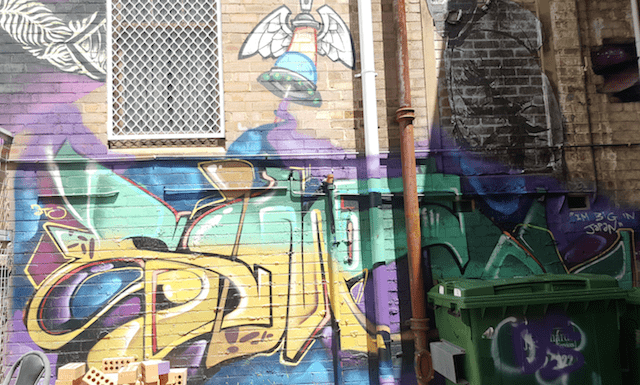
Is graffiti art or vandalism ? It is both depending on how the graffiti is done and it would be best if all artists used the right channels to make it purely art and never vandalism.
Related Posts

Top 10 Australian Street Artists

World’s Top 20 Most Famous Graffiti Artists
Arguments for Graffiti as Art Essay
- To find inspiration for your paper and overcome writer’s block
- As a source of information (ensure proper referencing)
- As a template for you assignment
Introduction
The modern world has born witness to the emergence of a new form of creative expression known as graffiti. It is usually represented by writings or drawings on walls, which are in many cities prohibited. There is a debate on whether this type of artistry is art or vandalism. Given the comprehensive nature of art and the time and care necessary to produce a piece of graffiti, it should be considered a form of art.

Definition of Art
Before determining the appropriateness of calling graffiti art, it is essential to understand what is meant by art. It is an extremely wide term that encompasses a large array of human activities. In its most general definition, almost anything created by a person can be considered art. However, children’s drawings are not displayed in a museum, although they also can be an example. The same principle of distinguishing creations by the fact of their existence applies to graffiti.
Graffiti is a form of art because it requires creativity and artistic expression. Any form of drawing or aesthetic writing cannot be accomplished without skill and talent. Graffiti are complex creations, consisting of numerous details and stylistic choices. An individual without the knowledge of the basics of drawing and the ability to use a paint stick is not capable of producing an adequate graphical piece. As a result, the limitations in people’s capacity in graffiti production exemplifies it as art.
It should also be noted that not all art in history was immediately recognized as such. Some of the creations, which are socially accepted and positively regarded today, were also previously condemned. As arts writers point out, “statues and other works of art flaunting penises and the naked body were considered perverse and sacrilegious” ( Graffiti: Is Graffiti Art ). Therefore, the current lack of tolerance toward graffiti does not mean that perception will not change over time.
Quality as a Prerequisite
Many people do not acknowledge this type of drawing as a form of art. The reason for graffiti’s ambivalent status lies in the lack of official quality criteria. Whereas it is possible to analyze a painting relying on a set of artistic standards, there are no established and agreed guidelines for evaluating graffiti. Nevertheless, the absence of formal recognition does not devalue the efforts that are necessary to embellish walls with aerosol paint.
It might even be possible that the lack of rules for making graffiti is precisely what distinguishes it as art. “Graffiti is one of the purest forms of art, supporters say, because it can exist without support or syndication from the mainstream art establishment” ( Graffiti: Is Graffiti Art ). In essence, nothing constrains an artist from delivering the work they envision. The freedom of expression further solidifies graffiti’s position as art.
Just like any human creation, pieces of graffiti differ based on quality. Writing and drawing on walls have evolved into a subculture. Its representatives have their own conception of techniques and standards for creating a work of graffiti ( Graffiti: Is Graffiti Art ). Moreover, the illegal nature of these drawings has forced creators to work faster, incorporating stencils. “As a result, graffiti has grown more complex and specialized, including stickers and other media besides spray paint” ( Graffiti: Is Graffiti Art ). Overall, the qualitative features of graffiti have added to its artistic value.
Functions of Art
Most pieces of art convey a creator’s message or artistic idea. Graffiti is not an exception since it emerged as a means to voice social displeasure. As supporters of attributing graffiti to art claim, it “provides a tool for communicating with the larger population” ( Graffiti: Is Graffiti Art ). Similar to many other forms of visual art, like caricatures, cinema, or paintings, writing on walls can draw attention to social issues, propagate an idea and, in any other way, execute the communicative function of art.
Another purpose of art is setting the tone and accentuating an artist’s feelings. In a similar manner to typical visual art, graffiti can also brighten the mood. Colorful drawings and writings on walls can make urban surroundings less grim and more joyful. Graffiti can impact a person emotionally and psychologically, appeal to their sense of beauty, and entertain them, thus functioning as any other work of art.
Probably the most evident feature of art is that it does not have to be enjoyed by everyone. There are pieces, which are appraised as manifestations of genius and dismissed as shallow objects at the same time. Graffiti also form a wide range of reactions, from those who consider it to be evidence of criminalization and vandalism to those who sincerely uphold it as the modern iteration of street art.
Altogether, graffiti can, by all means, be considered a form of art. It requires skill and lets artists express their ideas and sentiment. Some graffiti can be characterized as possessing exceptional quality rivaling socially accepted works of art. The opinion and legal status can change over time, with the current condemnation of graffiti being a contemporary phenomenon. Ultimately, it executes all functions typical of art and should subsequently be recognized as such.
“Graffiti: Is Graffiti Art.” Infobase . 2011. Web.
- Graffiti Culture: Is It a Form of Artistic Expression or Criminal Activity?
- Analyzing Graffiti as a Subculture
- Views on Graffiti From Sociological Perspectives
- The Artistic Legacy of Maya Lin: A Cultural Response to the Vietnam War
- Brush Reveals Heart: Artistic Features of Su Shi's Calligraphy
- Mix of Non-Traditional Media and Images in Postmodernism Art
- Art: Painting, Printmaking, Architecture, Installation
- "The Smoking Plant" Project: Artist Statement
- Chicago (A-D)
- Chicago (N-B)
IvyPanda. (2022, February 25). Arguments for Graffiti as Art. https://ivypanda.com/essays/arguments-for-graffiti-as-art/
"Arguments for Graffiti as Art." IvyPanda , 25 Feb. 2022, ivypanda.com/essays/arguments-for-graffiti-as-art/.
IvyPanda . (2022) 'Arguments for Graffiti as Art'. 25 February.
IvyPanda . 2022. "Arguments for Graffiti as Art." February 25, 2022. https://ivypanda.com/essays/arguments-for-graffiti-as-art/.
1. IvyPanda . "Arguments for Graffiti as Art." February 25, 2022. https://ivypanda.com/essays/arguments-for-graffiti-as-art/.
Bibliography
IvyPanda . "Arguments for Graffiti as Art." February 25, 2022. https://ivypanda.com/essays/arguments-for-graffiti-as-art/.
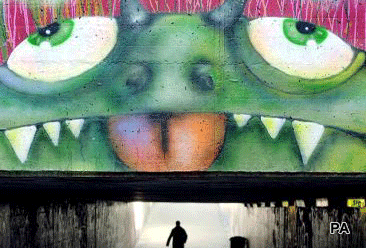
Graffiti – vandalism or acceptable street art?

Does graffiti symbolise a neighbourhood in decline, or should it be seen as valuable art? Join Labs panellists in the great graffiti debate
Graffiti ‒ an act of vandalism and a sign of a neighbourhood in decline?
Some would agree, but increasingly, this view is being challenged by the growing prominence of ‘street artists’ who create graffiti that many people would consider to be valuable works art.
Just last week, a collection of works by British graffiti artist Banksy sold for more than £400,000 at an auction in London, and graffiti stencils by the Russian street artist ‘Pavel 183’ have also sold for hundreds of thousands of pounds.
On the other hand, the usual perception of graffiti as a 'problem' persists: English Heritage reported recently that around 70,000 listed buildings are estimated to have been damaged in 2011 ‒ from, they cited, a combination of graffiti, urination and metal theft.
What are your views on graffiti? We asked Labs participants to have their say on the issue
Responses tended to represent one of two general opinions: panellists either felt that graffiti was largely an act of vandalism regardless of its type, or felt that in some situations, it can be acceptable and even seen as art. The responses we received made it clear that it is the content, style and message of the graffiti that matters.
Many people also suggested setting up designated areas to keep graffiti under control, while a few participants proposed new penalties for graffiti that is unmistakeably anti-social.

What do you think about graffiti? Join the debate by using Disqus below
Here's what our poll participants had to say...
1. All graffiti is vandalism
Argument 1: it makes an area look run-down.
“Graffiti makes an area look run-down and uncared for, somewhere where you would not like to shop or live ” Anon
“Even when done well, which is very rarely, it looks awful. It makes an area look run-down; if these people are so keen on doing it they should do so on their own homes ” Rosie S, Staffordshire
“It makes some areas look like war zones and the authorities should be more keen to remove it” Peter F, Surrey
Argument 2 - It is illegal
“ Painting on someone else's/public property is illegal . Graffiti is an expression by individuals who lack a sense of personal ownership” Anon
“It is done illegally. People think they can just do what they like and get away with it ” Julia F, Bicester
“No one has the right to deface public or private property ” Bob E, Shropshire
“Disfigures the object(s) on which it is placed. It is criminal damage ” Anon
Argument 3 - Others have to clean it up
“It invariably costs people, private companies and local authorities money to remove ” Wayne, Hertfordshire
“I have suffered from tagging on my property . There is very little art to it that I can see and it is expensive to clear up ” Anon
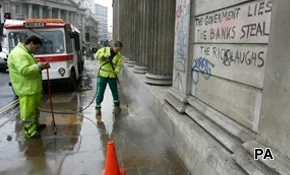
“It's mostly ugly and unsightly and damages someone’s property - plus the tax payer has to pay to clean it up ” Anon
“Costs taxpayers money to clear and gives a bad image to places. Usually the person causing the graffiti is not a tax payer so they contribute nothing! ” Aidan, Cornwall
2. Some graffiti is acceptable
Argument 1 - it can be artistic and improve the look of the area.

“Very occasionally, graffiti can be a mini work of art which brightens up an otherwise boring wall ” Anon
“Graffiti that is art, like well-drawn pictures that enhance a buildings plain wall is acceptable. If it is used to disguise an ugly piece of architecture or an eyesore is certainly going to enhance the area ” Mikki T, Scotland
“An artist that has made use of a run-down building to create their art is in fact using his/her environment to its full potential. It is giving the building of neglect a new purpose ” Anon
“ Sometimes graffiti is used to paint murals in connection with youth club work etc. and helps cover untidy areas. This can brighten up the village or town” Anon
Argument 2 - It can be good, dependent on context
“Graffiti artists are talented so I enjoy looking at their work when it's in a place where people can appreciate it and it looks good rather than someone just spraying the bus stop as they go by” Anon
“ It needs the right context and surroundings to earn respect in its own right, and not be seen as vandalism” Anon
“I think there needs to be a distinction between street art and graffiti or tagging . Street art can enliven drab areas of housing or the urban environment” Anon
“ 'Good' graffiti is art and can be enjoyed publicly. ‘Bad' graffiti is a picture of a phallus or a simple scribble, swear words or a pointless and usually misspelled note” Adam L, Lancashire
Argument 3 - It can carry an important message
“I can tolerate graffiti that has a sense of humour or irony and expresses a comment about society ” Anon
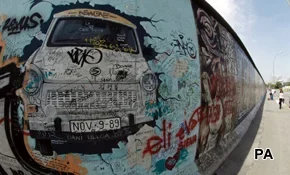
“I think it can be an important form or artistic expression, often for socially excluded groups . I also think it can give young people a voice” Anon
“ S ome graffiti can be very powerful , and a worthwhile means of self-expression” Anon
“I think it is a way for people to make their feelings clear - often people who feel that society is not listening to their vocal complaints” Mrs S, Northamptonshire
Follow and discuss: @YouGovLabs on Twitter
What do the polls show as the election is called?

Sunak favourability ticks up after election announcement

General election 2024 debates: what do Britons want?

Britons divided on Rishi Sunak’s national service plan

Health, wealth and happiness: what do Britons hope for?

There WAS enough room on Titanic debris for Jack, say Britons

Sadiq Khan holds 19pt lead over Susan Hall with two weeks to go

John Humphrys - Smoking: Bring on the Nanny State?
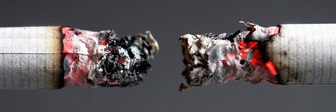
Voting Intention: Con 18%, Lab 44% (30 Apr - 1 May 2024)


Essay on Graffiti Art Or Vandalism
Students are often asked to write an essay on Graffiti Art Or Vandalism in their schools and colleges. And if you’re also looking for the same, we have created 100-word, 250-word, and 500-word essays on the topic.
Let’s take a look…
100 Words Essay on Graffiti Art Or Vandalism
What is graffiti.
Graffiti is pictures or words painted on walls and other surfaces, usually in public places. It can be very colorful and sometimes very beautiful. Some people do it to express themselves or to send a message. Others might just do it for fun.
Graffiti as Art
Many people see graffiti as art. This is because it can be very creative and show a lot of skill. Artists like Banksy have made graffiti famous around the world. In some cities, there are even special walls where graffiti is allowed.
Graffiti as Vandalism
However, not everyone likes graffiti. When it is done without permission, it is illegal and called vandalism. It can make buildings and places look messy and uncared for. Cleaning it up costs a lot of money, which is not fair to the owners.
Whether graffiti is art or vandalism depends on where and why it was done. If it’s illegal, it’s vandalism. But, if it’s allowed and adds beauty to a place, it can be a form of art. It’s a topic with many opinions.
250 Words Essay on Graffiti Art Or Vandalism
Graffiti is a type of art where people draw pictures or write words on walls or other surfaces, usually in public places. It can be done with spray paint, markers, or other tools. Some people see it as a way to express themselves and make dull walls look interesting.
Many people believe graffiti is a real form of art. Artists can show their feelings and ideas through colorful drawings and messages. In some cities, there are special places where graffiti is allowed and can be a tourist attraction. These artworks can make a place look vibrant and tell stories about the community.
On the other hand, some think graffiti is vandalism, which means damaging property without permission. When graffiti is sprayed on someone’s house or a shop without them saying it’s okay, it can be upsetting and cost money to clean up. It can also be seen as rude and a form of breaking the law.
Graffiti walks a thin line between being art and vandalism. It depends on where it’s done and what it shows. If an artist has permission and creates something that makes a place look better, it can be seen as art. But if it’s done without permission and damages property, it’s often seen as vandalism. It’s important to respect others and their property while finding ways to express creativity.
500 Words Essay on Graffiti Art Or Vandalism
Graffiti is a type of art that people make by drawing or writing on walls or other surfaces, usually in public places. It can be done with spray paint, markers, or even stickers. Some people think of graffiti as colorful pictures or words that can be very pretty to look at, while others see it as writing or drawings that should not be there.
Many people believe graffiti is a true form of art. This is because it allows artists to express their feelings and ideas in a very open way. These artists choose walls in cities as their canvas and create big, bold pictures for everyone to see. Some famous artists, like Banksy, have made graffiti that is worth a lot of money and is shown in museums. When graffiti shows talent and adds beauty to a place, many people appreciate it.
On the other hand, there are people who think graffiti is vandalism, which means it is an action that damages property. If someone paints on a wall without permission, it can be against the law. This is because the wall does not belong to them, and they are changing how it looks without asking. Cleaning graffiti can cost a lot of money, and it can make places look messy or not taken care of. Sometimes, graffiti can also include mean words or pictures that can upset people.
Permission Makes a Difference
A big thing that decides if graffiti is art or vandalism is permission. If an artist asks for permission and gets it before making their graffiti, it is more likely to be seen as art. Cities sometimes have special places where artists are allowed to put their graffiti. But, if someone makes graffiti without asking, it is often seen as vandalism.
Community Impact
Graffiti can change the way a community looks and feels. When it’s done well and with permission, it can make a place more interesting and fun. It can even bring people to the area to see the art. But if there is a lot of graffiti that looks like scribbles or is done without care, it can make people think the neighborhood is not a good place to be.
In the end, whether graffiti is seen as art or vandalism often depends on what it looks like, where it is, and if it was done with permission. Some graffiti is beautiful and is made by artists who want to share something with the world. Other times, it can be unwanted and cause harm to people’s property. It’s important for communities to talk about graffiti and decide together how to handle it. This way, artists can have places to show their work, and people can keep their buildings and walls the way they want them to be.
That’s it! I hope the essay helped you.
If you’re looking for more, here are essays on other interesting topics:
- Essay on National Geographic
- Essay on Nanotechnology Boon Or Bane
- Essay on Nacirema Culture
Apart from these, you can look at all the essays by clicking here .
Happy studying!
Leave a Reply Cancel reply
Your email address will not be published. Required fields are marked *
Save my name, email, and website in this browser for the next time I comment.

- Skip to main content
- Keyboard shortcuts for audio player
Morning Edition
- Latest Show
- About The Program
- Contact The Program
- Corrections
A new Banksy Museum has opened in NYC … minus Banksy

Isabella Gomez Sarmiento

The Banksy Museum in New York City features replicas of 160 original Banksys. This one is called "Good Doctor," and was originally stenciled in New York in 2010. Isabella Gomez Sarmiento/NPR hide caption
The Banksy Museum in New York City features replicas of 160 original Banksys. This one is called "Good Doctor," and was originally stenciled in New York in 2010.
The new Banksy Museum in New York City tries to recreate the experience of stumbling upon Banksy graffiti in the wild. There is a fake manhole cover here, artfully-arranged debris there, and wall after wall fabricated to look like brick or concrete and stenciled with Banksy’s iconic pictures of children, police officers and rats.
But there’s a catch — these are not real Banksys, and Banksy never agreed to have his work reproduced.
Museum founder Hazis Vardar, who privately collects original Banksys and opened a museum of replicas in Paris several years ago, said he isn’t worried about the artist’s lack of involvement.

This Art Show Doesn't Have Banksy's Blessings — His Fans Don't Seem To Mind
“Banksy changed the rules. If you want to organize something about Banksy, you have to change the rules also,” he said on a recent walk through the exhibit.
Vardar described Banksy as a pirate, and said he identifies with that. “Pirate” might be a good description. For decades, the British street artist has harnessed his anonymity, surprising city dwellers and the art world with his satiric murals and pop-up exhibits that appear suddenly overnight.
But because much of Banksy’s graffiti is created on walls and buildings that don’t belong to the artist, they’re technically vandalism — and they’re often damaged by weather, painted over by other people, or sold to private galleries and collectors.

This museum reproduction is based on "Hula-Hoop Girl," which appeared in Nottingham, UK in 2020. Isabella Gomez Sarmiento/NPR hide caption
This museum reproduction is based on "Hula-Hoop Girl," which appeared in Nottingham, UK in 2020.
“Sometimes the cleaning team of the city, they just clean over it in the morning,” said Vardar. In his mind, the Banksy Museum preserves Banksy’s work for the sake of the public.
But that’s not how Leila Amineddoleh, an art and intellectual property attorney, sees it.
“There are tons of replicas of the Mona Lisa, and that’s not preserving the original,” she said. “I would argue the same for Banksy.”

New Banksy tree mural in London has been defaced
Many of Banksy’s pieces are site-specific, with a particular context in mind. For example, the museum reproduces an image of a young girl floating away as she holds onto a handful of balloons that was originally painted on the West Bank barrier wall and seemed to comment on the plight of Palestinians. Amineddoleh argued that by taking art like that indoors and charging a $30 entrance fee, the museum not only changes the meaning, but undercuts Banksy’s core mission.
“The subversion, making his message available to the public for free, that’s a really important part of Banksy’s message,” she said.
The artist has already said no — kind of
Banksy has already made it clear he doesn’t want his work used in this way. Pest Control, the company that manages Banksy’s licensing, has denounced on its website anyone who makes a profit off the artist’s work. And in his Academy Award-nominated 2010 documentary Exit Through the Gift Shop , the artist criticized the commercialization of street art. In one of the museum’s staircases, there’s a Banksy quote painted on the wall that reads “Copyright is for losers.”

The museum put this quote, from Banksy's 2005 book Wall and Piece , in a stairwell. Isabella Gomez Sarmiento/NPR hide caption
The museum put this quote, from Banksy's 2005 book Wall and Piece , in a stairwell.
Neither Pest Control nor Banksy responded to requests for comment on Vardar’s exhibitions. But Amineddoleh said that while Banksy’s opinions on licensing and intellectual property are part of what makes him such an interesting artist, it doesn’t change how the law applies to him.
“He automatically had a copyright when he created this artwork,” she said. “The fact that he doesn’t like copyright doesn’t really make a difference.”

So your property has been 'Banksy-ed.' Now what?
What’s a little more complicated, she said, is how another law, the Visual Artists Rights Act (VARA) might apply to a street artist like Banksy. If any of the works in the museum were created on property owned by the artist, he could have a case under VARA to have his name removed from the unauthorized versions in Vardar’s museum. But that law has not been tested on vandalism, said Amineddoleh, so it’s hard to know whether or not it would extend Banksy any protections on pieces he doesn’t technically own.
Vardar’s response: if Banksy has any issues with the museum, he could sue.
Why doesn’t Banksy bring museums like this to court?

The Banksy Museum reproduction of "If Graffiti Changed Anything – It Would Be Illegal" which appeared in London in 2011. Isabella Gomez Sarmiento/NPR hide caption
The Banksy Museum reproduction of "If Graffiti Changed Anything – It Would Be Illegal" which appeared in London in 2011.
“The issue is Banksy never wants to sue because he tries to conceal his identity, and I think that’s one of the reasons he’s become so popular,” said Amineddoleh. “There’s this mystique around who he is, and if he destroys that mystique, maybe he would be destroying some of the value of his art.”
For now, no lawsuit means the Banksy Museum can keep its doors open for as long as people show up.

A new Banksy mural adorns a destroyed building in Ukraine
But those visitors won’t include people like Brooklyn Street Art founders Jaime Rojo and Steven P. Harrington. Over email, the men, whose organization preserves and documents street art, said they found the use of the word museum humorous and that they cannot take any Banksy exhibition unauthorized by the artist seriously.
“This newest iteration is a sizable stretch in credulity, with promoters saying that anonymous artists from the UK have recreated Banksy's work,” they wrote. “In another field, those people are called commercial artists or decorative painters — no different from recreating Michelangelo's ‘Creation of Adam’ on the wall in a pizza parlor.”
The audio and digital versions of this story were edited by Jennifer Vanasco .
- New York City
- Share full article

Look Closer: Searching for New York’s Hidden Art
In a city that’s constantly changing, remnants of old public artworks can be spotted between towers and in traffic triangles. You just have to look for them.
SuZen, an artist, looks up at her mural that is now hidden by a new tower. On the side of the building on the right, a sliver of her mural is still visible. Credit... Amir Hamja/The New York Times
Supported by

By Anna Kodé
To report this story, Anna Kodé interviewed artists and searched for traces of old public artworks across Manhattan.
- May 31, 2024
Standing in front of the Port Authority Bus Terminal on 42nd Street, a person can easily experience a multi-sensory overload — red double-decker tour buses, tourists asking which way the M&M store is, flashy neon-colored billboards and the clanking and whirring of construction sounds.
Yet sandwiched in between two buildings — both over 10 stories tall with large glass windows — a sliver of a mural offers some tranquillity, peeking through the noise and the lights.
The mural, which depicts a New York cityscape through venetian blinds, is the work of SuZen, a 78-year-old multimedia artist who received a $10,000 public grant for the piece in 1984. At the time, the building was home to the notorious Show World Center, one of the city’s largest sex emporiums that offered adult DVDs and peep shows. The shop has been described as “the McDonald’s of Sex,” and for decades stood as a vestige of Times Square’s gritty past.
SuZen never stepped foot inside, never saw a shimmy or rented a video, but because “the image has these blinds that you’re looking through,” a business that hosted peep shows “seemed like a good match,” she said. “It made me chuckle.” The piece — based on a photograph SuZen took from a beauty salon in Manhattan and translated into a mural by Jeffrey Greene , the founder of EverGreene Painting Studios — stood as a faux window on Show World, even after owners began converting the building into offices in 2018.
Then last fall, SuZen noticed that a taller building went up directly adjacent to it, rendering her mural nearly invisible.
“I was sad and heartbroken and upset. No one even notified me that this was happening,” SuZen said. “Do we really need more glass buildings? There are so many empty buildings that I pass.”
In the ever-changing urban landscape of New York City, where real estate is in extremely high demand, there are myriad examples of development — or the tastes of the wealthy and powerful — overtaking public art. At the 5Pointz complex in Queens over a decade ago, 45 murals — the work of 21 graffiti artists — were whitewashed by a developer that was later fined $6.75 million for violating the Visual Artists Rights Act. In 1989, a 120-foot-long rusting steel sculpture in Lower Manhattan by Richard Serra , the renowned sculptor who died earlier this year, was torn down, following backlash from employees who worked in the federal office building the piece was in front of. Last month, New Yorkers mourned the loss of “ Sherita ,” a pink dinosaur-esque figure on a billboard on Classon Avenue in Brooklyn.
But SuZen’s mural wasn’t painted over or removed. Its existence today is nothing short of miraculous — glimmering through the cracks of the city’s towers, a reminder that some ghosts of public art are around us. Just look closer. I did.
‘Much Protest and Not Much Success’
The Visual Artists Rights Act, which was passed in 1990, grants artists “the right to prevent any destruction, distortion, mutilation, or other modification” of certain publicly displayed works. SuZen got in touch with a lawyer to see if her mural would be protected under the law, but she was told that because her mural went up in 1984, it didn’t apply, she said.
“I don’t know if it’s possible, but it would be wonderful if we could relocate the mural,” she told me.
Richard Haas , an 87-year-old artist living in Manhattan, estimates that more than half of his works have been lost to shifts in the built environment over the years. Known for architectural and trompe l’oeil murals, Mr. Haas has created works in New York, Washington, Cincinnati, Boston, St. Louis, Miami and more.
“I am not naïve enough to think that when I put a work out in the rain it’s not going to get wet. It’s part of the nature of the business,” Mr. Haas said. “Since you’re borrowing somebody else’s building, you really don’t have enough control of it.”
Mr. Haas said that in the process of making his work, he strives “to make sure that it has enough importance — enough character — so that it can fight for its own existence down the road.”
In the 1970s, before SoHo was filled with luxury boutiques and Instagram-bait museums, Mr. Haas created a mural on the facade of a building on the corner of Prince and Greene Streets. The work playfully extended the building’s facade with painted windows and architectural details, but over the years, it deteriorated and was graffitied over. Last year, with financial help from a real estate developer, it was restored beyond its former glory, with the addition of cats and a dog perched on the windows.

I live two blocks from this mural, and I’ve walked by it countless times since the restoration. But I never really saw it until now — in part because of how convincing Mr. Haas’s illusions are, but also because of how public art tends to blend into the streetscape, becoming another tree or stop sign in the background that we’ve been primed to tune out. Unless, that is, you look for it.
While his SoHo mural saw a happy ending for now, Mr. Haas’s work on the former Manhattan Detention Complex in Chinatown — seven mural panels that depicted the history of immigration on the Lower East Side — saw a different fate. The complex is currently being demolished, expected to be finished by early 2025 , to make way for what is anticipated to become the world’s tallest jail. Mr. Haas tried to save his work in a legal battle , but in 2022 a judge ruled that the demolition could continue.
The situation played out the way he thought it would, with “much protest and not much success,” Mr. Haas said.
Yet at the corner of Centre and White Streets, partially covered by scaffolding, there are less grandiose print reproductions of the panels on display. They are temporary, but for now, a flicker of his work remains.
From Murals to Ad Space
These themes of loss and change — new monuments coming at the cost of old ones — are the subject of “Lost New York,” an exhibition that opened in April at the New-York Historical Society. Over a recent phone call, Wendy Nālani E. Ikemoto, the museum’s chief curator, said the speed of change in New York “inspires nostalgia and inspires feelings of protection.”
Before his work was seen ubiquitously across Uniqlo T-shirts, Baggu tote bags and Urban Outfitters socks, Keith Haring ’s primary canvas was the city’s walls and streets. One of his subway sign drawings — a white stick figure on all fours, drawn below the recognizable “Bowery” text — is on display at the “Lost New York” show.
But some of Mr. Haring’s works can still be spotted in their original locations throughout the city.
In 1987, the artist created a 170-foot-long, playful mural for what was then called the Carmine Street pool (now, it’s the Tony Dapolito pool). The Parks Department closed the public recreation center in 2020 for renovation, but Mr. Haring’s mural is visible from the sidewalk through the pool gate’s black bars. This summer will be the fifth summer in a row that the pool hasn’t been open to the public, as the city continues construction.
Yukie Ohta , an artist and archivist who has lived in SoHo for over 50 years, has been documenting changes in her neighborhood, where murals were once abundant but are now largely replaced by painted advertisements.
“Nowadays, it is too lucrative to sell wall space in SoHo to advertisers for building owners to pass up offers in the interest of beautification,” Ms. Ohta, 55, wrote on her website, SoHo Memory Project , in 2011. “In this way, wall murals have become an art form seen only in low-income neighborhoods, where the alternative to artwork is a blank wall. And thus, at least in SoHo, the wall mural has been supplanted by the billboard.”
But tucked away in a traffic triangle where Watts and Broome Streets meet, one artwork emblematic of a bygone era remains. There, in the 1970s, Bob Bolles installed sculptures that he created out of metal scraps. The space unofficially became known as “ Bobby Bolles Park .” (Mr. Bolles later died.)
In 2001, the Parks Commissioner at the time, Henry J. Stern, called them “junk.”
“The site had become a shelter for the homeless and a dump site for trash. We wanted to create a new beautiful green space with trees, shrubs and flowers,” Mr. Stern had told The Times.
Mr. Bolles’s artworks were evicted from their home and placed in storage on Randall’s Island.
Following backlash from longtime SoHo residents and community groups, the Parks Department agreed to bring some of the sculptures back. Today, one of Mr. Bolles’s pieces — a metal object shaped like a cactus — still stands in the center of the triangle.
Anna Kodé writes about design and culture for the Real Estate section of The Times. More about Anna Kodé
The State of Real Estate
Whether you’re renting, buying or selling, here’s a look at real estate trends..
When Donna Lennard, the owner of the restaurant Il Buco, bought a house in East Hampton, “it was an adorable cottage” surrounded by water. Now it’s even better .
A man who struggled to find housing in East Hampton has turned his experience into a podcast , and many of his guests are “navigating the waters of trying to make a living here.”
The renovation of a 1953 trailer bought on impulse turned a backyard into an upscale version of a campground — complete with a marble shower in the trees.
As climate change produces more extreme weather, insurers are losing money, even in states with low hurricane and wildfire danger. Here’s how home insurance rates are affected .
High-end condos and rentals now offer medically dubious therapies like at-home IV drips as a regular wellness practice, not just a vacation splurge.
Advertisement
Saturday, June 1
Previous issues, submit a tip.

Nassau Hall vandalized with pro-Palestine graffiti, second incident in one week
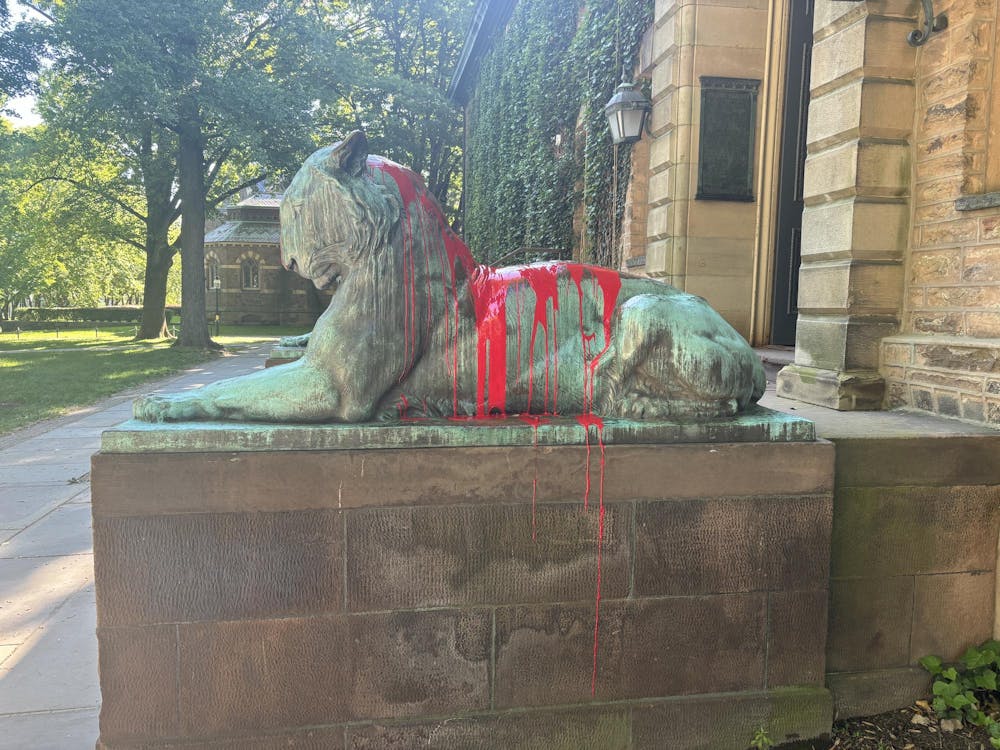
An autonomous group doused the tiger statues outside of Nassau Hall in red paint.
Eden teshome / the daily princetonian.
The front of Nassau Hall was vandalized with red paint and spray-paint graffiti reading, “Tragic Accident, Genocide Denial” at approximately 3:40 a.m. on Wednesday, May 29, according to a Public Safety Clery report from Wednesday. Princeton Israeli Apartheid Divest (PIAD) did not claim responsibility, but said that an “autonomous group” was responsible for the action — the same response the group gave following the vandalization of Robertson Hall on May 25.
PIAD posted photos of the action on Instagram around 8:30 a.m., which showed graffiti in front of the steps of the building. One of the tiger statues flanking the steps has red paint poured on the tiger’s back. These photos also included a golf cart parked in front of the written graffiti.
In a statement to the ‘Prince,’ a spokesperson for PIAD wrote, “The action was conducted by an autonomous group calling attention to Princeton’s complicity in Israel’s genocide in Palestine, especially in light of its brutal escalation in Rafah, where displaced Palestinians were burned alive.” The statement added, “Princeton must divest and dissociate from Israel. PIAD supports the action’s goals.”
This action comes in the wake of the vandalism of Robertson Hall and the fountain outside of it on Scudder Plaza in the early morning of May 25 by a similar “autonomous” group of individuals. The fountain’s water was dyed red, and the side of Robertson Hall was spray painted in red with the words “Pretty Town, Bloody Gown.” Robertson Hall is home to the School of Public and International Affairs (SPIA) department.
PIAD has called for a “diversity of tactics” on their X account, stating that “Any action, any disruption, any escalation” was encouraged.
According to the Clery Crime and Fire Log for May 25, the vandalism of the SPIA building and fountain remain under open investigation and are classified as “Criminal Mischief.” The vandalism that occurred on Wednesday is also designated as “Criminal Mischief” and also remains under open investigation. The log reported that the incident was resported at the same time that it was carried out: 3:40 a.m. on May 29.
University Facilities employees were seen removing the graffiti from Nassau Hall with water hoses at 11:15 a.m. By 11:45 a.m., traces of paint on the statues and much of the graffiti on the ground was removed.
The University did not respond to a request for comment.
Olivia Sanchez is an associate News editor for the ‘Prince.’ She is from New Jersey and often covers the graduate school and academic departments.
Please send any corrections to corrections[at]dailyprincetonian.com.

At Commencement, pro-Palestine protestors silently demonstrate and walkout

At Tuesday’s Commencement, around 1,300 undergraduate degrees and 600 graduate degrees were awarded. Though there were no significant disruptions, during President Eisgruber’s Commencement speech over 70 students stood up and faced away from him, and around 15 students walked out.
University to hold the degrees of two seniors present at Eisgruber’s Reunions talk

Two seniors will not receive their degrees on Tuesday pending a disciplinary investigation into their involvement at a May 25 protest during an address by President Eisgruber. One of the seniors alleges that the two of them were not involved in the protest inside Richardson auditorium and opted to exit the room as the protest escalated.
Alumni lead Frist exhibit commemorating 150 years of Asian and Asian American students

The exhibit “150 Years of Asian and Asian American Students at Princeton,” displayed in Frist Campus Center, looks to tell the often-overlooked role of Asian Americans in the University’s history.
Most Popular
Pro-palestine protesters briefly obstruct p-rade, continues as normal, spia building and fountain vandalized, pro-palestine protesters disrupt eisgruber’s annual reunions address.

UW President Provides “Proof” of Antisemitic Graffiti … from Out of State
Protesters call on cauce to retract accusations of antisemitism after sending faulty evidence.

Protesters from the recently disbanded Liberated Zone call on University of Washington (UW) President Ana Mari Cauce to retract her statement describing their chants and signs “vile and antisemitic" after she used photos that appear to be from Florida and California as proof of her claim.
In a public letter released Friday morning, a group of people affiliated with the Liberated Zone accused Cauce of acting either in malice, incompetence, or both. “What is truly vile,” they wrote, borrowing Cauce’s words, “is the way proponents of Zionism have falsely and maliciously tried to discredit a movement protesting documented human rights violations. It is shameful and embarrassing that the administration of the UW became the driving force of this malice.”
United Front for Palestinian Liberation (UF) set up their tents in the quad on May 1, joining college students across the country in pressuring their universities to divest from Israel and weapon manufacturers amid the ongoing genocide in Gaza. Unlike at other schools, UW did not sicc the cops on protesters but rather negotiated, albeit not very generously .
Then, on May 15, as UW administration appeared more and more impatient at negotiations, Cauce released a public statement in which she accused protesters of “vile and antisemitic” rhetoric and redoubled her call for a voluntary end to the encampment. However, as her critics quickly noticed, Cauce did not provide any examples of the “vile and antisemitic” rhetoric. UF assumed Cauce referred to the maligned phrase “from the river to the sea,” but after multiple email requests, Cauce finally clarified.
In a May 30 email exchange between Cauce and UW graduate student and encampment participant Juliette Majid, Cauce sent five images others had sent to her that she used to justify her accusations against her students. She attached a photo of a bench with the words “MUG ZIONISTS ONLY” written on it, a corner of a brick building with the phrases “FREE PALESTINE” and “FUCK OFF ZIONISTS” spray painted on it, and the statute of George Washington tagged with “SAVE A LIFE… KILL YOUR LOCAL COLONIZER.”
In the letter, Liberated Zone participants argued only two images Cauce sent qualified as antisemitism rather than anti-Zionism—a picture of a swastika followed by the words “ThE Jews,” and a bit of sidewalk with “Kill Jews” painted on it. But neither of those images came from their protest.
Majid told Cauce that the last two pictures were not captured at UW, in the state of Washington, or even in the year 2024. The swastika image appeared in a 2021 news story about an antisemitic rally at the Florida Holocaust Museum, and the “Kill Jews” image appeared in a tweet posted by the Anti-Defamation League of Los Angeles in 2019.
Cauce emailed back, “I do believe there is another ‘Kill Jews’ that I will look for.”
Still, Cauce said even if those last two images did not come from UW, “reasonable people who not believe [sic] that criticism of Israel or its policies is antisemitic, would still believe that the the [sic] ones saying F*ck Zionists or Death to Zionists or Kill Colonizers or the Mugging bench for Zionists are anti-Semitic. And they all fit the Department of Education’s definition of anti-semitism.”
In a later message, Cauce apologized that false images “got mixed in” and that in trying to respond quickly she did not verify their origin. But she said she made her assessment “primarily based on the images we all agree were from the camp.” She stands by what she says and continues to believe other instances of graffiti qualifies as antisemitism because it crosses a line between “criticism of the Israeli government and the specific targeting of ‘Zionists’.”
Still, the Liberated Zone protesters said using the easily disprovable pictures suggests UW and Cauce acted either “with malicious intent or are fully incompetent.” Either way, they wrote that Cauce’s accusations, still not substantiated to their standards, “tainted the reputation of activists and granted Zionists false legitimacy to berate any pro-Palestine people at the UW,” putting students in “physical, academic, and social danger.” The Liberated Zone protesters claimed the night following Cauce’s statement, a drone crashed into the Quad and someone “intentionally” launched a firework from a surrounding building. They said those events felt parallel to those that preceded attacks at other schools.
“If you truly cared about student safety, these would have been investigated before being used to perpetuate false and unfounded accusations against the Liberated Zone and its members,” Majid wrote to Cauce in the email exchange.
Cauce wrote to Majid that she sees “no evidence” of harm from her statement. She wrote, “...when individuals participate or justify vandalism and the use of that sort of vile and violent rhetoric toward others… they, in fact, do damage to their cause. And that is exactly what happened. It was not my email that did this.”
In an email statement, UW spokesperson Victor Balta reiterated what Cauce said in her emails to Majid. He wrote, "I can’t speak to the source of the images, however, it was a relief to know that two of those images were not from the UW — as President Cauce told the student after learning more about their origin. Regardless, the May 15 statement from President Cauce was not based on any one or two images. There was ample evidence of graffiti that reasonable people would consider to be antisemitic on campus and this created an unwelcome and fearful environment for many in our community."
While the University does not plan to retract Cauce's accusations against the protesters, this latest episode shows students will continue to push back on UW administration with or without tents on the ground. The students will keep advocating for their demands: Academically and financially divest from Israel, cut ties with Boeing, and end the repression of pro-Palestinian voices on campus.

Hannah Krieg
More in news.
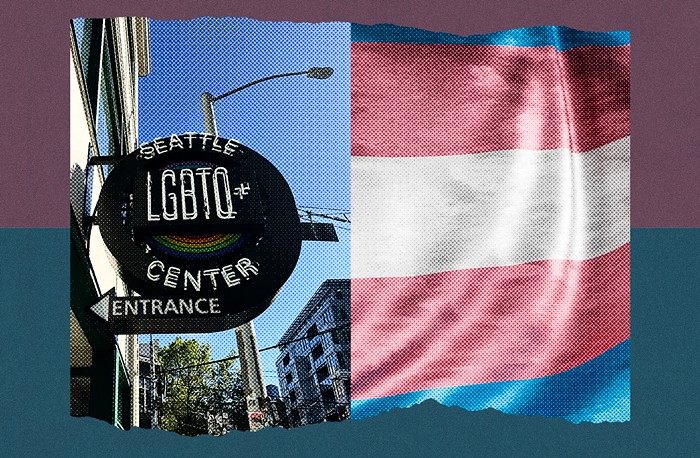
Seattle's LGBTQ Center and Kelley-Ross Pharmacy Develop New Gender-Affirming Care Program
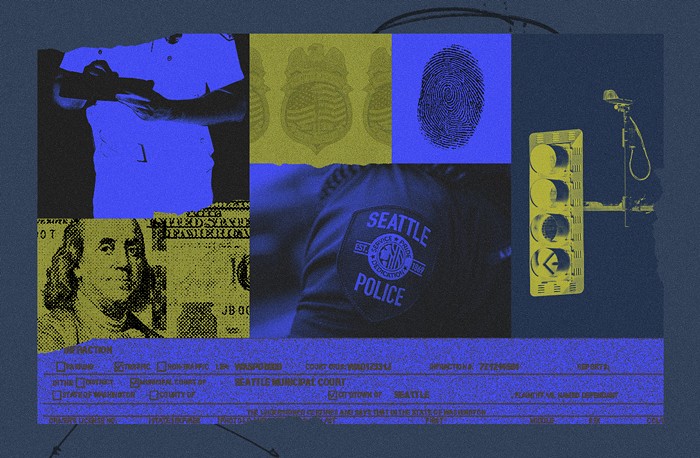
Proposed Contract Kills Any Hope for Real Police Alternatives in Seattle
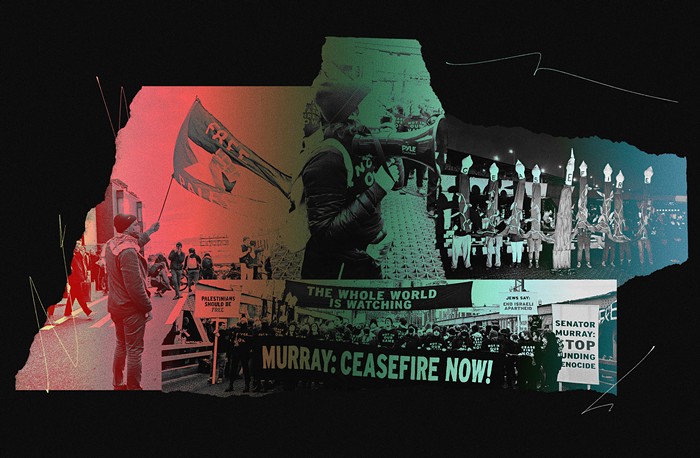
Merry Christmas! Israel Is Still Committing Genocide

Mayor Harrell Caves and Passes Landmark Building Emissions Standards

Lefty Organizer Saunatina Sanchez Launches Challenge Against Tanya Woo for City Council

What Would Washington’s Parents Rights Initiative Do?
Editors' picks.

Protester Accuses Former KOMO Reporter Jonathan Choe of Assault

Why Are We So Scared of Scooters?

SPD’s Million-Dollar Parking Space

Seattle Democrats Snub Sawant After Request to Endorse Rent Control Trigger Law

How Will Conservatives Smear City Council Candidates This Election?

Did Our Last Mayor Commit a Felony?
Popular articles, trump found guilty on all counts, seattle police chief adrian diaz out as top hog, city council delays last-minute attempt to pull money from black and brown community development projects, prosecutors consider charges against spd officer who struck and killed pedestrian in january, as a ground invasion looms, thousands in seattle protest for a free palestine, the rise and fall of the bolawrap, just can't get enough, sign up for our newsletter for news recaps, updates, and more.
- Week at a Glance (Monday)
- Stranger Suggests (Wednesday)
- Event News (Thursday)
- Weekend Guide (Friday)
- Food News (Saturday)
- Promotions & Giveaways
- Slog AM (Weekdays)
- A+P (Tuesdays)
- Sundays With A Stranger (Sundays)

Support The Stranger

Student vandal who wrote anti-Israel graffiti on woke NYC school to be disciplined — as families, alums demand mandatory Jewish history lessons
A student at a woke New York City school is facing “disciplinary consequences” after being identified Saturday as the vandal who defaced its entrance with anti-Israel graffiti.
Though there were two students thought to be involved in the graffiti incident at the Ethical Culture Fieldston School, a spokesperson for the Bronx institution insisted there was just one culprit, who was identified following an “immediate” investigation and will now be disciplined.
The senior wrote “Free Palestine” in yellow letters on the brick wall above the $63,000-a-year school’s front entrance Monday afternoon, a source told The Post.
The vandalism was apparently live-streamed, the source said, though it was not known whether a recording of it existed.
The troubling incident prompted school administrators to host a “listening session” with parents Wednesday night, including many “Jewish affinity group parents.”
Meanwhile, another source told The Post Saturday that a female student wrote “From the River to the Sea” — a rallying cry that calls for the eradication of the Jewish state — on school property several weeks ago.
“It’s all a mess,” a source familiar with the situation told The Post.
“The school isn’t being upfront about the incidents so no one really knows what’s going on.”
Meanwhile, it emerged Saturday that a group of Jewish Fieldston families and alumni wrote a “Stop Antisemitism” letter to administrators on May 19 with a list of 10 demands to make the Ivy Preparatory School League school safer for their kids as a result of the anti-Israel incidents.
“All of us chose to join the ECFS community because we expected it to deliver the promise inherent in its name — an ethical culture,” the letter obtained by The Post said.
“Indeed, many of us have fought for social justice on behalf of the non-Jewish minorities at this school with the post-Holocaust vow, ‘Never Again’ in our hearts. We write now to tell you that, during this Jewish American History and Mental Health Awareness Month, we are not okay.”
They asked that a task force made up of parents, faculty, administrators and students be organized by June 1 and that teachers commit to mandatory courses on Judaism, the Holocaust, the Jewish Diaspora and the history of antisemitism in all middle and upper school grades — which would be overseen by an expert and the task force.
“For months, your administration has assured us repeatedly that (1) support for us, (2) effective antisemitism education for the whole community and (3) a plan for dialogue and education about the Middle East and Israeli/Palestinian conflict were each forthcoming,” the letter read.
“We are still waiting.”
As of May 22, 857 people had signed the letter.
No one answered the phone at Fieldston when The Post called on Saturday. The school was founded in 1878 by Felix Adler, the son of a rabbi.
The Post also obtained a letter from nearby Riverdale Country School administrators about an incident in which a student found a swastika drawn on a desk earlier this month.
The student alerted teachers and administrators, who said they conducted an investigation but doubted the guilty party would be found, according to the letter.
Riverdale said it was offering “optional counseling spaces” for students.
“Hate has no place at Riverdale and anyone who perpetuates such acts will be subject to immediate dismissal from our school,” the letter read.
Fieldston, Riverdale Country School and Horace Mann School, all located in the tony Riverdale section of the Bronx, are collectively known as the “Hill schools.”

Watch CBS News
Felony charges filed against 3 people suspected of vandalizing UC Davis Egghead sculpture
By Cecilio Padilla
May 29, 2024 / 10:38 AM PDT / CBS Sacramento
DAVIS – Three people are now facing felony charges for allegedly vandalizing one of the iconic Egghead sculptures at UC Davis.
On Wednesday, the Yolo County District Attorney's Office announced that Lysandra Dasilva, 31, Nathan Orr, 30, and Cheyenne Xiong, 20, had been arrested on suspicion of vandalism.
Prosecutors say all three are facing a count of vandalism, conspiracy, and an enhancement that the alleged crime was carried out with planning, sophistication, or professionalism.
The college announced back on May 24 that three people had been arrested on suspicion of tagging several UC Davis buildings with graffiti. The "Yin and Yang" Egghead structure near the Art complex was among the structures hit, authorities said.
Officials did not detail what kind of messages were painted.
A total of five Egghead sculptures can be found around campus. The bronze sculptures were designed by UC Davis Professor Robert Arneson.
Since they appeared in 1991, the sculptures have been targeted several times by vandals.
Dasilva, Orr and Xiong are set to be arraigned on the charges Wednesday afternoon.
The DA's office noted that Dasilva and Xiong are also facing a count of resisting or obstructing a peace officer.
Cecilio Padilla is a digital producer for CBS Sacramento and a Sacramento-area native who has been covering Northern California for more than a decade.
Featured Local Savings
More from cbs news.

Former volunteer coach in Stanislaus County suspected of sex acts with a minor

Attorney sentenced for sexual battery on minors at yacht club in West Sacramento

Second arrest made in connection to homicide in Stockton's Lakeview neighborhood

Sacramento wants to replace gas-powered garden tools with with greener technology

IMAGES
VIDEO
COMMENTS
Graffiti vandalism has a number of forms. The most harmful and destructive of all are the gang graffiti and tags. The former are generally used by gang members to outline their turf or threat opposite gangs. These often lead to acts of violence. Tags represent the writer's signature and can also be complicated street art.
In conclusion, the debate surrounding graffiti as either art or vandalism is a nuanced and complex one that requires a thoughtful examination of various factors. Throughout this essay, we have explored the motivations behind graffiti, its impact on communities, and the legal and ethical implications of this controversial art form.
Graffiti Is Always Vandalism Heather Mac Donald is the Thomas W. Smith Fellow at the Manhattan Institute, and a contributing editor of City Journal. Updated December 4, 2014, 9:16 AM
Jay Beswick, founder of the National Graffiti Information Network, said in the same report that Los Angeles spends $28 million annually dealing with graffiti and Southern California cities together incur costs of $100 million. " It's not a question of art. It could be the Mona Lisa, but if it's on the side of your house, your rights are violated.
Introduction Graffiti is found in many societies with different cultural contexts and has become a witness and an ethnographic source of information on urban art development (Waclawek, 2011). Modes of expression are mainly related to visibility, notoriety, choice of venue, transgression, and are often a mean to react and protest while remaining anonymous, by illegally introducing messages in ...
Hook Examples for Graffiti Essay. Street Art's Silent Rebellion: Step into the world of graffiti as a form of silent rebellion, where artists use walls as their canvas to challenge the status quo and voice their unfiltered opinions. The Artistry Behind Urban Vandalism: Discover the intricate artistry hidden within the world of graffiti, where spray cans become tools of expression, turning ...
Graffiti has a long history and is characterized by its conceptuality and the ability to break into urban space and challenge the ordinary. Art always claims originality and produces the effect of emotional shock. In history, graffiti has often become a visual image of the world's pain, challenging problems, and inconvenient truths.
The opinion that street art is vandalism (that is, not art) is widely held. Many people despise graffiti - but we are more than happy to line our public spaces with something much more offensive ...
Download Free PDF. View PDF. Art and Crime (and Other Things Besides …. ): Conceptualising Graffiti in the City. Ivanka Stabreff Salazar, Cameron McAuliffe. In this paper, we critically review the literature on graffiti and street art with a view to bridging the divide between the stark extremities of public graffiti discourse.
Graffiti, a vandalism sub-genre, is differentiated by its aesthetics, or its message. However, graffiti straddles the line between pure art and pure vandalism. Though graffiti represents a ...
Yet as the art form has evolved, so have the connotations surrounding it, and at present, turning walls into canvases remains nothing more than vandalism according to US law. Editorial Team , Oct 3, 2023. The debate over whether graffiti constitutes art or vandalism is incredibly complex, and depends on many factors, such as the location of a ...
Why Graffiti Should Be Considered Art, Not Vandalism Essay Contemporary art is the art of today, produced in the 21st century. It differs from the modern art, which is art of a style marked by a significant departure from traditional styles and values.
Art is an ongoing interaction with our world enhanced by the expression of our creativity in form of graffiti, hip-hop, street theatres and graphic novels. Graffiti is a form of art, and not vandalism. Some people have deep-rooted misconceptions about graffiti and street art. People think spray cans are not valid artistic media because they are ...
In fact, it has spread around the world. "Graffiti, at its core, is both vandalism and art. In my opinion, graffiti is 100% art and 100% vandalism," said Henry Zhou, a student artist in Los Angeles, California. Zhou noted that graffiti is the voice of those who perhaps cannot find other ways to voice themselves and express themselves.
Banksy's controversial 'street art' includes spray paintings on live sheep and cows and graffiti on the huge wall erected to divide Israel and Palestine. Brad Pitt spent over $2 million on a Banksy original. Banksy designed an album cover for the Britpop group Blur in 2003 but he has refused at least four requests to do adverts for Nike.
This essay about the debate surrounding graffiti in America, questioning whether it should be considered as artistic expression or vandalism. It explores the complexities of graffiti as both an illegal act and a form of cultural commentary, acknowledging the tensions between art and law.
There is always a thin line between graffiti as art or vandalism. When graffiti is done in a public space, where other people find it unsightly or offensive, then it is considered as vandalism. That may not take away the message intended by the creator because once the public has seen the art behind and drawn attention to it, the creator's ...
Graffiti is a form of art because it requires creativity and artistic expression. Any form of drawing or aesthetic writing cannot be accomplished without skill and talent. Graffiti are complex creations, consisting of numerous details and stylistic choices. An individual without the knowledge of the basics of drawing and the ability to use a ...
Graffiti: Art or Vandalism Essay examples. Good Essays. 1453 Words. 6 Pages. Open Document. Most people can argue that there is a fine distinction between what is recognized as art and vandalism. The individual is often faced with uncertainty when the topic of graffiti arises. The public often portray graffiti as a destructive act towards his ...
Responses tended to represent one of two general opinions: panellists either felt that graffiti was largely an act of vandalism regardless of its type, or felt that in some situations, it can be acceptable and even seen as art. The responses we received made it clear that it is the content, style and message of the graffiti that matters.
Sam Cowey. Graffiti has been around for more than half a decade and practiced worldwide. However there is debate between whether it is a form of art or vandalism. Graffiti artists' debate that many do not understand the reason most graffiti artist take the risk of incarceration, fines, injuries, and in some cases death to paint a wall.
Graffiti is an art that allows individuals to express themselves , their talents and create jobs for artists who aren't as mainstream. Most people argue that graffiti is vandalism because of the money it takes to cleanup, but graffiti is a truly a form of art. Graffiti artists use graffiti to address problems in their communities (send a ...
250 Words Essay on Graffiti Art Or Vandalism What is Graffiti? Graffiti is a type of art where people draw pictures or write words on walls or other surfaces, usually in public places. It can be done with spray paint, markers, or other tools. Some people see it as a way to express themselves and make dull walls look interesting.
The Banksy Museum in New York City features replicas of 160 original Banksys. This one is called "Good Doctor," and was originally stenciled in New York in 2010. The new Banksy Museum in New York ...
The mural, which depicts a New York cityscape through venetian blinds, is the work of SuZen, a 78-year-old multimedia artist who received a $10,000 public grant for the piece in 1984. At the time ...
Vandalism and graffiti near boat yards and railway yards The deliberate destruction or damage to property owned by others is referred to generally as Vandalism (Howard, 2006) . The act of vandalism can be associated with activities like seat cutting, smashing windows, and window etching, drawing, or writing on surfaces (Thompson et al., 2012).
The front of Nassau Hall was vandalized with red paint and spray-paint graffiti reading, "Tragic Accident, Genocide Denial" at approximately 3:40 a.m. on Wednesday, May 29, according to a Public Safety Clery report from Wednesday. Princeton Israeli Apartheid Divest (PIAD) did not claim responsibility, but said that an "autonomous group" was responsible for the action — the same ...
Majid told Cauce that the last two pictures were not captured at UW, in the state of Washington, or even in the year 2024. The swastika image appeared in a 2021 news story about an antisemitic ...
A student at a woke New York City school is facing "disciplinary consequences" after being identified Saturday as the vandal who defaced its entrance with anti-Israel graffiti. Though there ...
The college announced back on May 24 that three people had been arrested on suspicion of tagging several UC Davis buildings with graffiti. The "Yin and Yang" Egghead structure near the Art complex ...